Europe is home to a diverse and fascinating array of bird species. From majestic raptors soaring in the skies to tiny songbirds filling the air with their melodious songs, Europe offers a wealth of avian life to discover and appreciate.
With its varied habitats and climates, including mountains, forests, wetlands, and coasts, Europe is a haven for birdwatchers and ornithologists alike.
Whether you are a seasoned birdwatcher or just embarking on your first birding adventure, Europe offers a wealth of opportunities to observe and admire these fascinating creatures in their natural habitats.
In this article, we will delve into the world of European birds, exploring their behaviors, habitats, and unique characteristics.
1. Peregrine Falcon
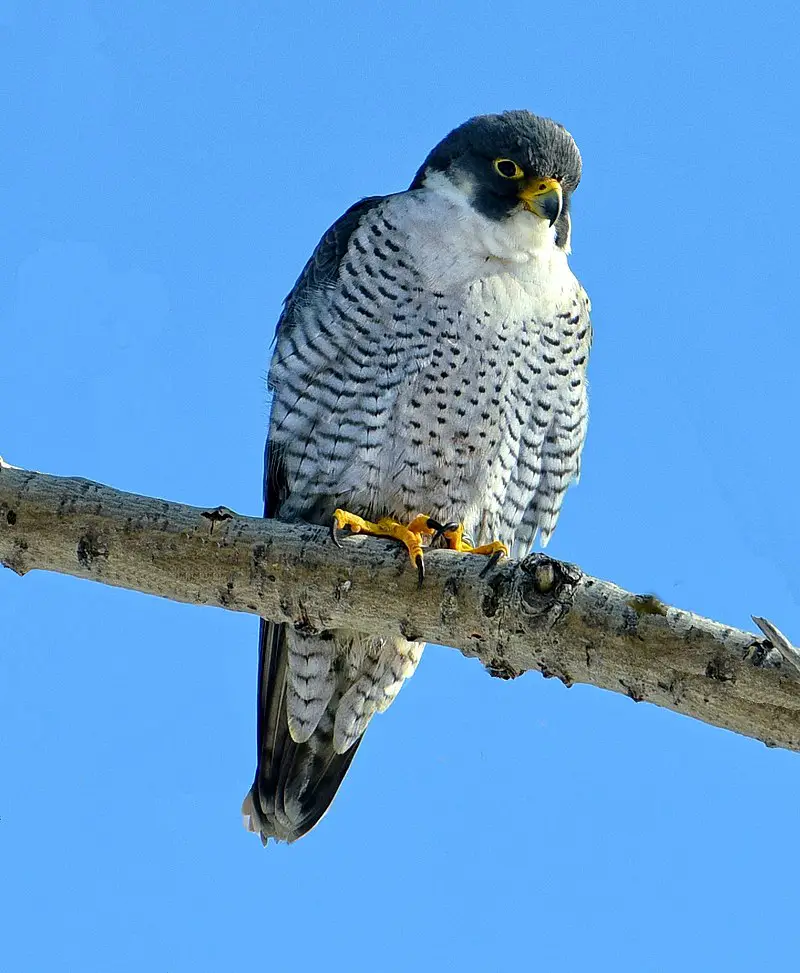
The Peregrine Falcon is a majestic bird of prey belonging to the family Falconidae. It has a blue-grey back, barred white underparts and black head making it easily recognizable.
This intelligent raptor is known for its incredible speed reaching over 320 km/h (200 mph) during hunting dives – one of the fastest animals in existence.
The peregrine falcon can be found around the world from Arctic tundra to tropical rainforests thriving with humans or in high alpine mountains far away from civilization.
With their beauty, power and adaptability they are an impressive species that have earned respect among many cultures throughout history as symbols of strength and endurance.Scientific classification:
| Kingdom | Animalia |
| Phylum | Chordata |
| Class | Aves |
| Order | Falconiformes |
| Family | Falconidae |
| Genus | Falco |
| Species | F. peregrinus |
Also Featured In: Most Common United States Birds, Birds of Sweden
2. House Sparrow

The house sparrow is a small bird of the Passeridae family. It has an average length of 16 cm and weighs 24-39.5 gm.
Females have dull brown and grey plumage, whereas males are brighter, with black, white and brown markings on their wings and back feathers.
This species is one among 25 different kinds in its genus Passer .These birds are found all around the world mainly near human dwellings where they feed off food scraps from garbage bins or gardens etc..
They also make nests close to houses which makes them even more visible to people living nearby.
House sparrows can be seen hopping around yards looking for food during daytime hours but usually hide in colonies at night time.Scientific classification:
| Kingdom | Animalia |
| Phylum | Chordata |
| Class | Aves |
| Order | Passeriformes |
| Family | Passeridae |
| Genus | Passer |
| Species | P. domesticus |
Also Featured In: Birds for Your Home Garden, Most Common Winter Birds
3. Common Starling

The Common Starling is a medium-sized passerine bird that belongs to the starling family. It has glossy black plumage with a metallic sheen, and in certain times of year it can be speckled with white.
The bill and legs are typically pink or black depending on the season, while its length measures about 8 inches long.
Its diet consists mainly of insects but also includes small fruits and seeds as well as some human food waste.
They live in large flocks which provides protection against predators, although they can become quite aggressive when defending their nesting sites during breeding seasons.
Overall, this species is highly adaptable and widely distributed across many parts of Europe making them one of the most successful birds in the region today.Scientific classification:
| Kingdom | Animalia |
| Phylum | Chordata |
| Class | Aves |
| Order | Passeriformes |
| Family | Sturnidae |
| Genus | Sturnus |
| Species | S. vulgaris |
Also Featured In: Birds That Live in Colorado, Blue Birds You’ll Found around Us
4. Osprey
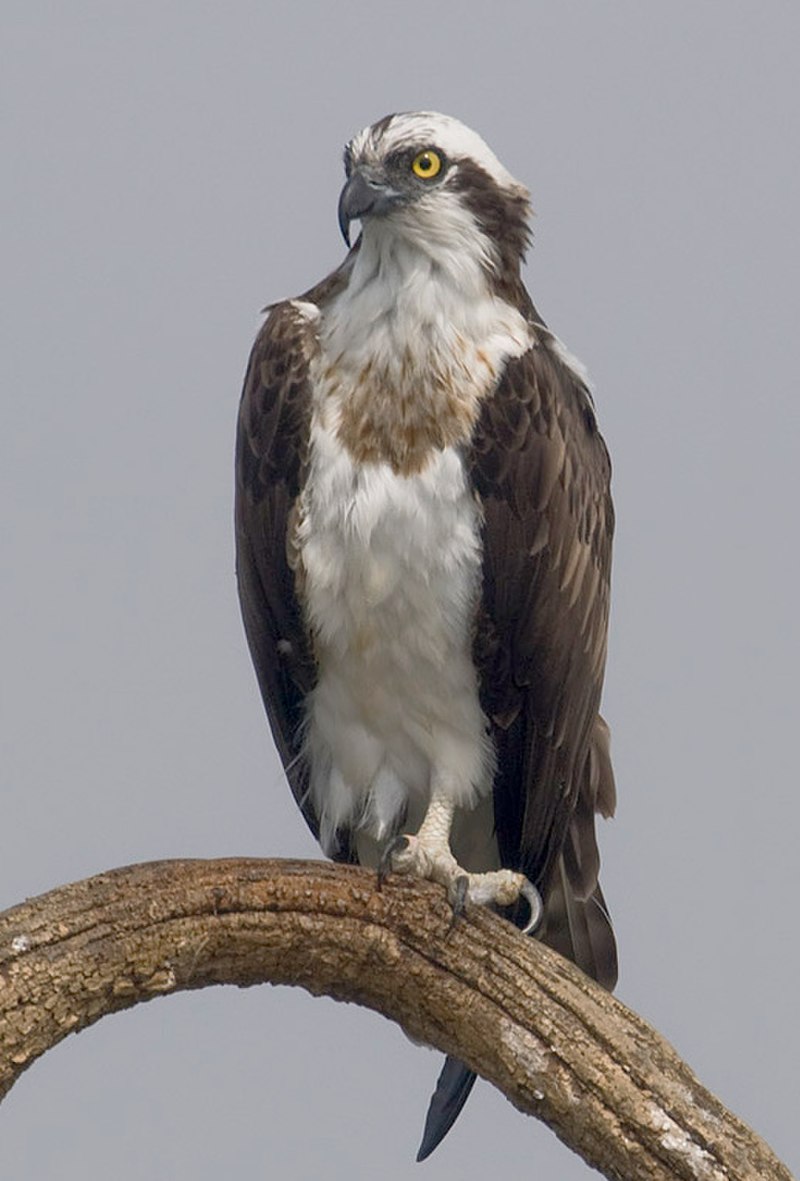
The Osprey is a majestic bird of prey with an incredibly wide habitat range. It has distinctive brown upperparts and greyish head and underparts, making it easily identifiable in the skies above many regions across the world.
With a wingspan of up to 180cm (71in) and body length reaching 60cm (24in), this large raptor specializes in hunting for fish, soaring high over rivers as well as coasts searching for its next meal.
Despite living near water sources, they can also be found inhabiting mountainsides or even woodlands, proving their incredible adaptability. An impressive species that truly deserves admiration.Scientific classification:
| Kingdom | Animalia |
| Phylum | Chordata |
| Class | Aves |
| Order | Accipitriformes |
| Family | Pandionidae |
| Genus | Pandion |
| Species | P. haliaetus |
Also Featured In: Most Popular Bird Species in North America, Birds of Latvia
5. Red-Breasted Goose
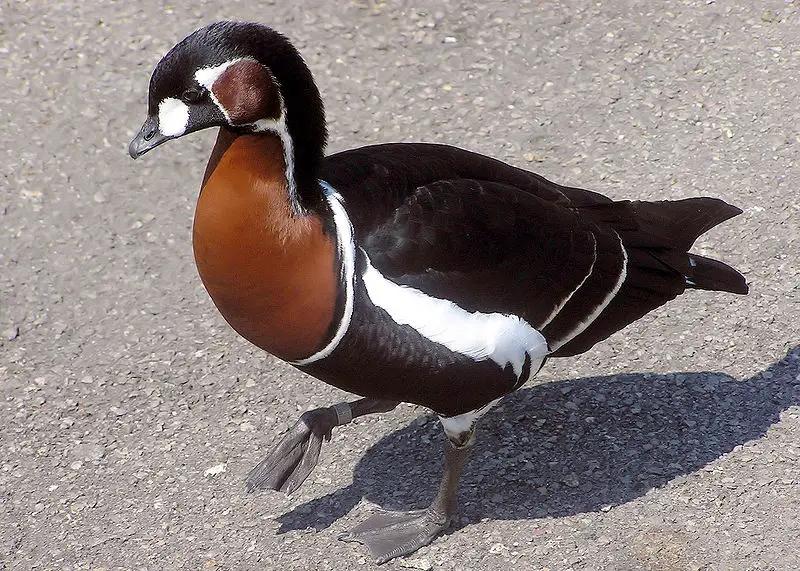
The Red-breasted Goose is a stunning bird that can often be found in Eurasia. It has bright red markings on its chest, neck and head which makes it stand out from other geese species.
The IUCN currently classifies the Red-breasted Goose as vulnerable due to population decline over recent years.
Although some authorities place this goose into its own genus Rufibrenta, most still believe it belongs within Branta bernicla due to similar structure and behaviour of both species.
To help protect this beautiful bird, conservationists are working hard to improve their habitats for breeding so that populations can continue flourishing in future generations.Scientific classification:
| Kingdom | Animalia |
| Phylum | Chordata |
| Class | Aves |
| Order | Anseriformes |
| Family | Anatidae |
| Genus | Branta |
| Species | B. ruficollis |
Also Featured In: Russian Birds, Most Common Romanian Birds
6. Red-Footed Falcon
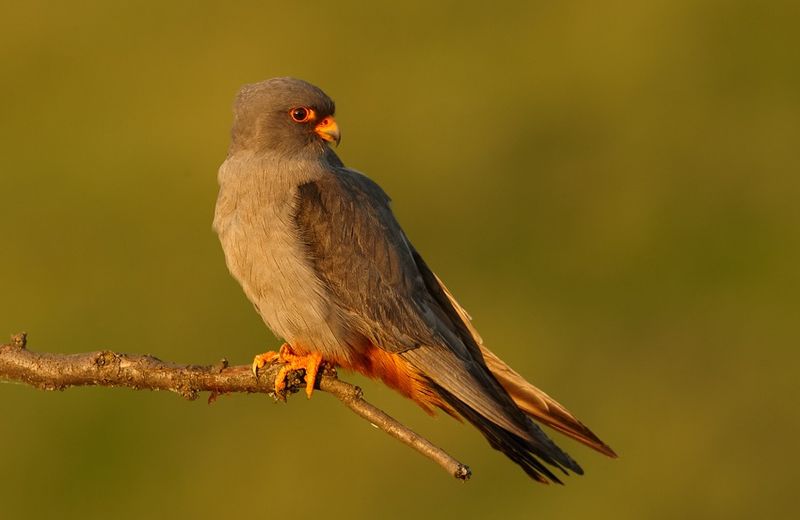
The Red-footed Falcon is a majestic bird of prey belonging to the Falconidae family. Found mainly in eastern Europe and Asia, numbers are unfortunately dwindling due to habitat loss and hunting.
This species migrates south for winter, with many birds making their way as far west as western Europe. In August 2004 one was even spotted in Britain; quite an impressive feat.
They have a striking plumage consisting of rich chestnut red legs contrasting against its grey wings and white underbelly – lending itself well to identification from afar.
The diet of this raptor mostly consists of small mammals such as mice or voles but it has also been known to feed on insects too.
A threatened species, conservation efforts must be made if we wish for generations after us to appreciate these beautiful falcons that soar across our skies.Scientific classification:
| Kingdom | Animalia |
| Phylum | Chordata |
| Class | Aves |
| Order | Falconiformes |
| Family | Falconidae |
| Genus | Falco |
| Species | F. vespertinus |
7. Eurasian Collared Dove
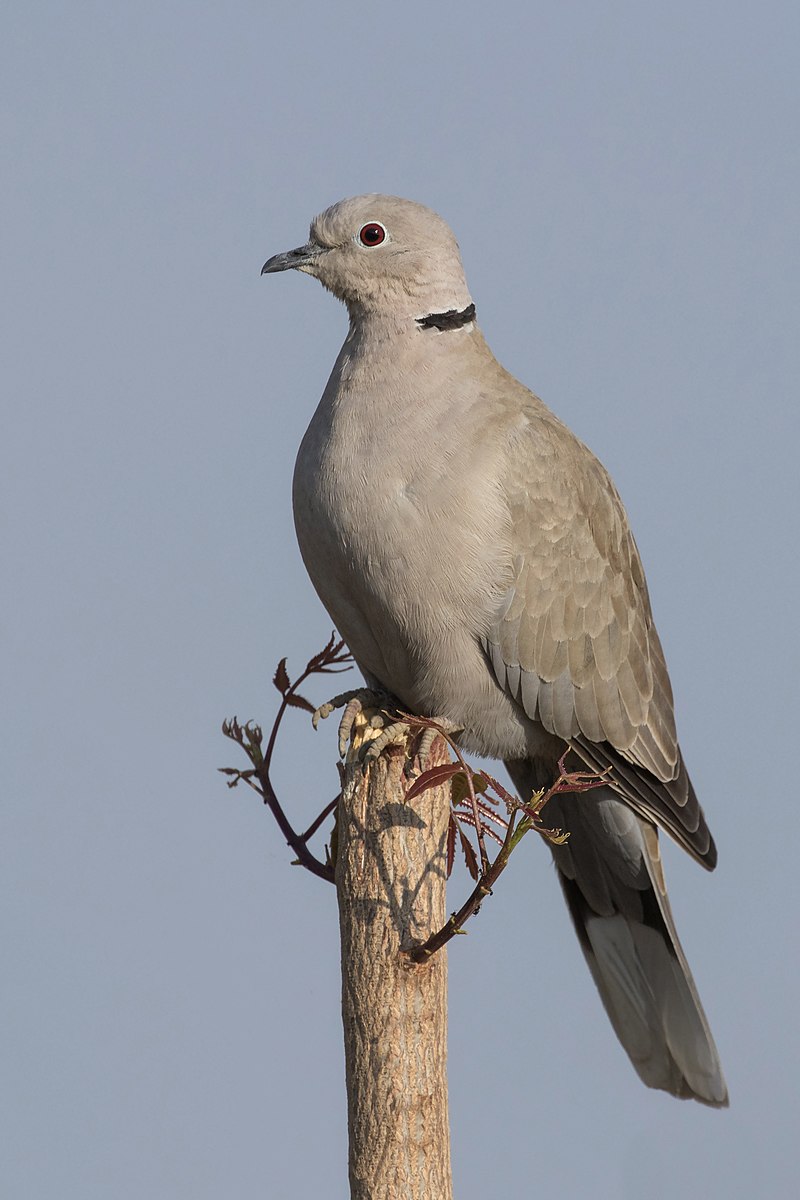
The Eurasian collared dove is a species of bird native to Europe and Asia, with its range expanding through introduction in Japan, North America, and islands in the Caribbean.
It has become so widespread that it is listed as Least Concern on the IUCN Red List. The scientific name for this bird was proposed by Hungarian naturalist Imre Frivaldsz – Columba decaocto.
This beautiful creature typically measures between 33-37 cm from tip to tail feathers, displaying an overall greyish brown plumage; they also have distinctive black half collar around their neck which gives them their common name.
These birds are mainly found inhabiting open woodlands or agricultural lands near human settlements where there’s plenty of food available such as grain fields or gardens where fruits can be eaten off trees.
With a vast global population trend increasing steadily each year these birds make great additions to many backyards throughout the world.Scientific classification:
| Kingdom | Animalia |
| Phylum | Chordata |
| Class | Aves |
| Order | Columbiformes |
| Family | Columbidae |
| Genus | Streptopelia |
| Species | S. decaocto |
Also Featured In: Top Birds Found in Mexico, Turkey Birds You Should Know
8. Great Spotted Woodpecker
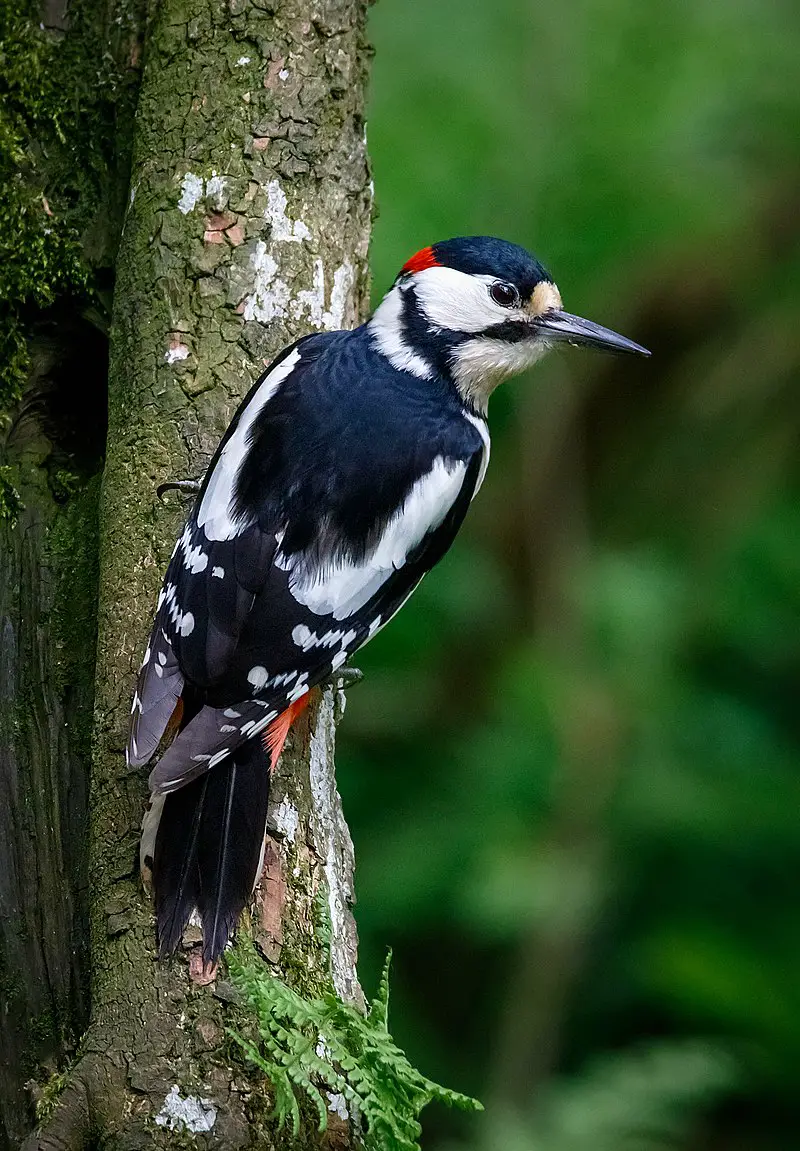
The Great Spotted Woodpecker is a fascinating bird. It has black and white feathers, with red patches on its lower belly and head or neck depending on whether it’s male or young.
This species inhabits most of the Palearctic region as well as some parts of North Africa.
For much of its range, it remains in one place all year round but may migrate if food sources become limited further north.
Its diet consists mainly of insects found under tree bark along with small amounts of seeds and fruit when available.
Despite being quite vocal they are hard to spot due to their camouflaged feathers which helps protect them from predators like cats and birds-of-prey.Scientific classification:
| Kingdom | Animalia |
| Phylum | Chordata |
| Class | Aves |
| Order | Piciformes |
| Family | Picidae |
| Genus | Dendrocopos |
| Species | D. major |
Also Featured In: Native Birds Of Germany, Most Common Lithuanian Birds
9. European Green Woodpecker
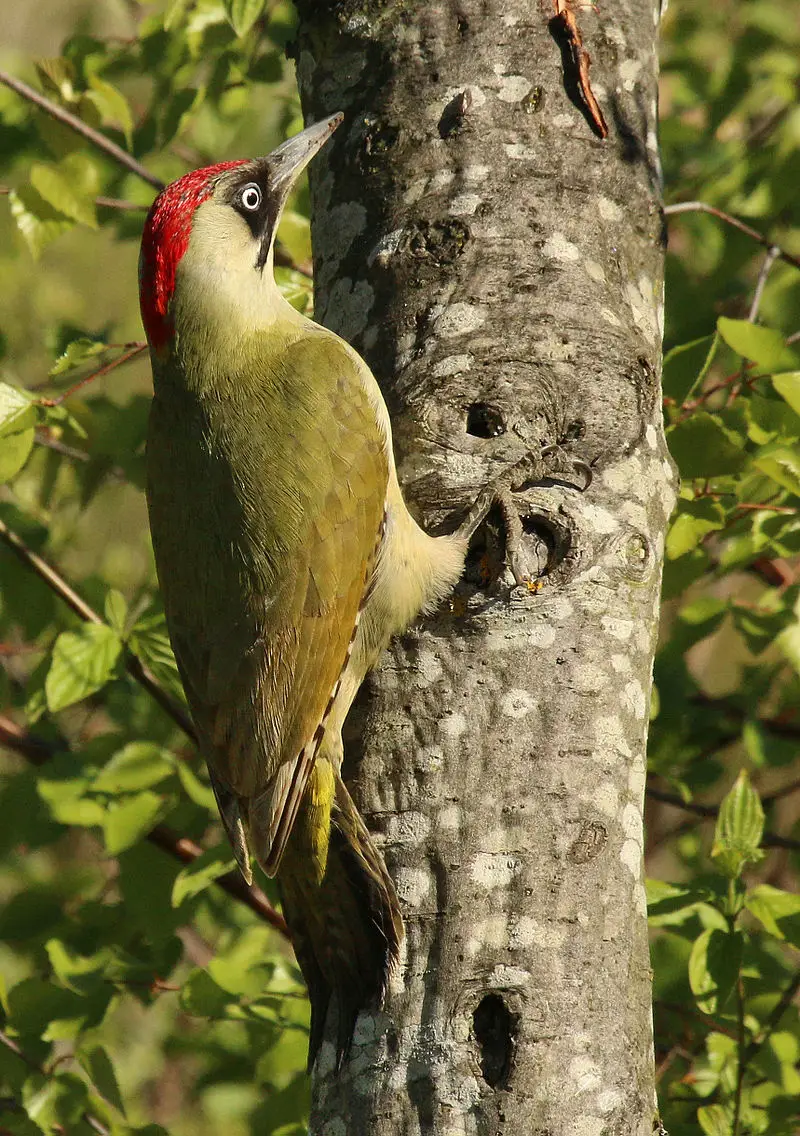
The European green woodpecker is a vibrant species with striking features. The body has an emerald hue, while males have a red crown and black moustache that extends to the middle of their forehead.
Females lack this characteristic feature but instead possess barred markings beneath the wings as well as yellow throats and cheeks.
It can be found in many parts of Europe and western Palearctic regions such as Spain and Portugal where it is replaced by its similar cousin; Iberian green woodpecker (Picus sharpei).
This bird loves inhabiting open forests or grasslands for its food source which typically consists on insects like ants, beetles, spiders among others.
Its powerful bill allows it to dig into tree bark searching for larvae underneath making it an efficient predator in these environments.Scientific classification:
| Kingdom | Animalia |
| Phylum | Chordata |
| Class | Aves |
| Order | Piciformes |
| Family | Picidae |
| Genus | Picus |
| Species | P. viridis |
Also Featured In: Most Common Spain Birds, Red European Birds
10. White Stork
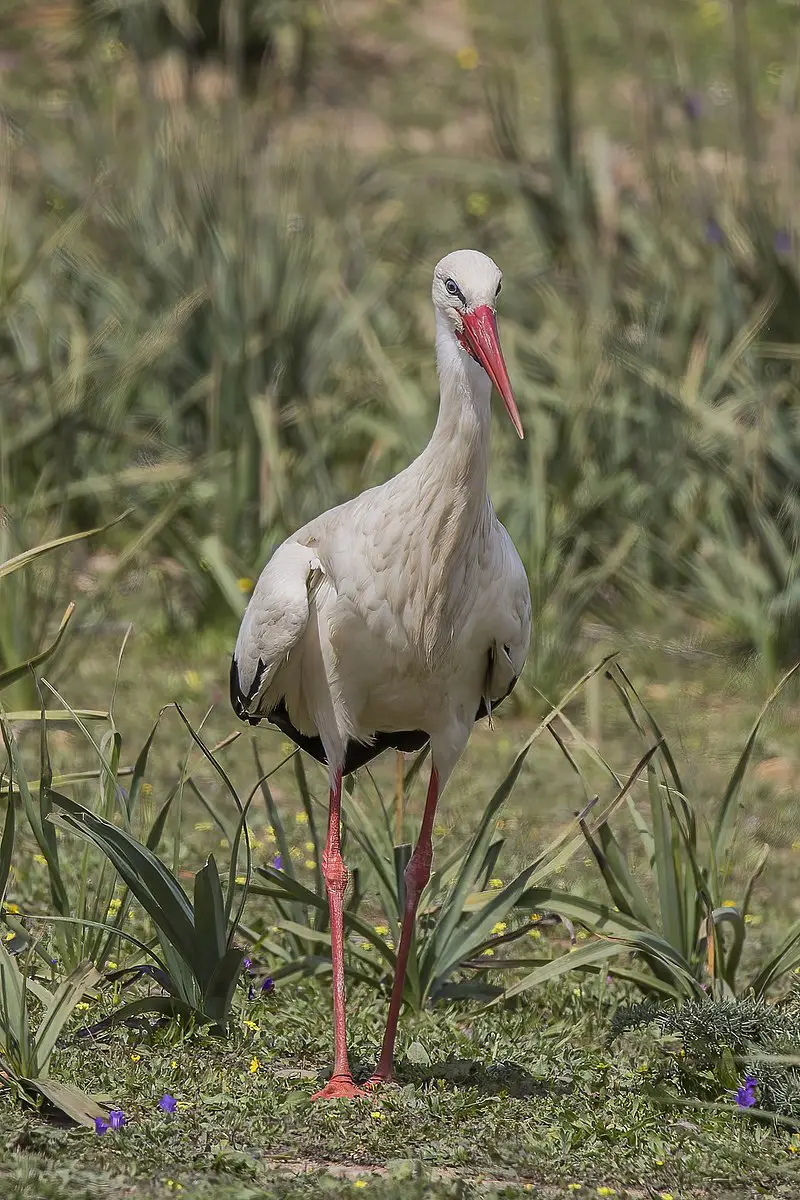
The White Stork is a majestic bird found in Europe, with white plumage and black wings. It has long slender legs and beaks that are usually bright red in color.
The average adult stands around 100 – 115 cm tall from beak to tail tip, while its wing span can reach up to 155-215 cm wide. There are two subspecies of the White Stork which differ slightly by size.
They feed on small animals such as frogs, fish or insects and nest near human dwellings due to the abundance of food available there; they also build nests atop chimneys or roofs when given the chance.
These birds have been revered for centuries as symbols of fertility because their return each spring often coincides with an increase in births among humans living nearby – something superstitious people take great note of.Scientific classification:
| Kingdom | Animalia |
| Phylum | Chordata |
| Class | Aves |
| Order | Ciconiiformes |
| Family | Ciconiidae |
| Genus | Ciconia |
| Species | C. ciconia |
Also Featured In: Amsterdam Birds You Should Know, Common Birds of Portugal
11. Tawny Owl
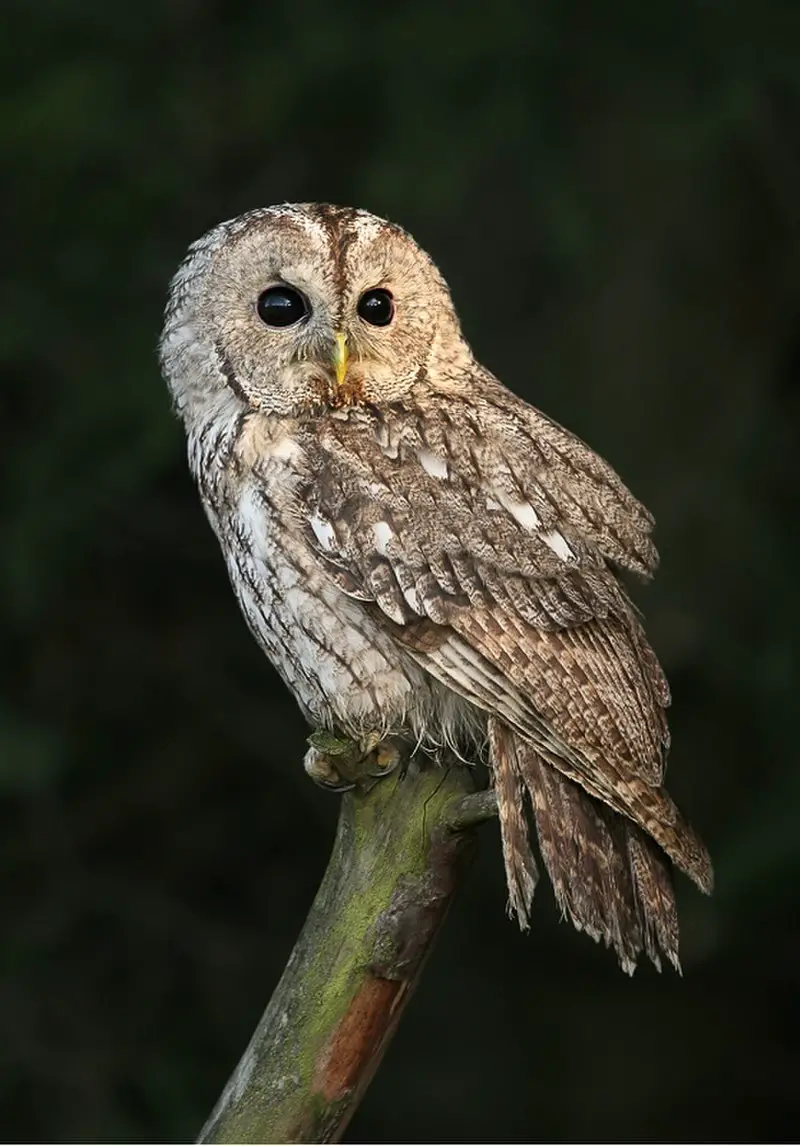
The Tawny Owl is a stunning bird found in woodlands throughout Europe to western Siberia. It has seven recognized subspecies, each with its own subtle differences.
This stocky owl usually has pale underparts with dark streaks and either brown or gray upper feathers. They build their nests high up in tree holes and are very territorial when it comes to protecting them.
During the day they roost quietly among branches of trees but become quite active at night as they hunt small mammals like mice and shrews using their extraordinary hearing skills.
The tawny owl’s call can be heard echoing through forests on still nights making it one of the most recognizable owls around.Scientific classification:
| Kingdom | Animalia |
| Phylum | Chordata |
| Class | Aves |
| Order | Strigiformes |
| Family | Strigidae |
| Genus | Strix |
| Species | S. aluco |
Also Featured In: Birds You’ll Find in Zoo, Most Common Scotland Birds
12. Barn Owl
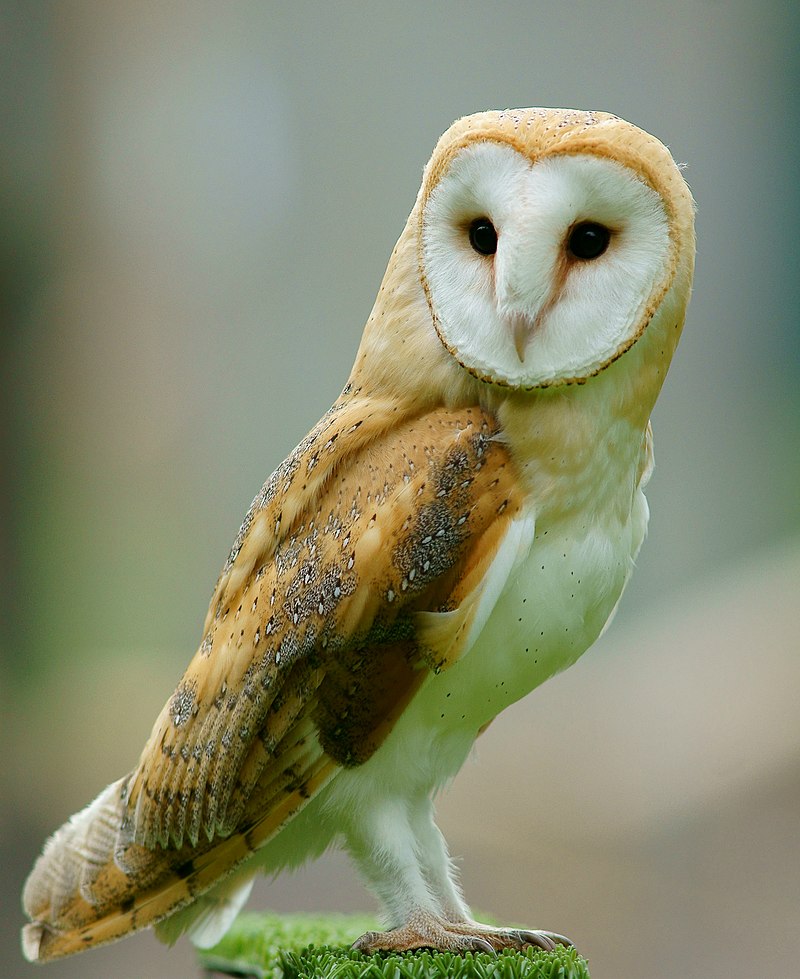
Barn owls are a beautiful and fascinating species of birds found around the world, with the exception of polar and desert regions, most of Indonesia and some Pacific Islands.
They have large eyes, thin legs and long wings that help them to hunt silently in low light conditions.
Their white colouring helps them blend into their surroundings making it easier for them to catch prey.
Barn owls are nocturnal hunters who use their impressive hearing capabilities to locate rodents moving within vegetation or tunnels beneath the ground.
They also feed on insects such as beetles, moths etc., which they can detect from high up in flight using their excellent vision even at night time.
The barn owl plays an important role in balancing ecosystems by controlling rodent populations which is why they should be protected wherever possible so that this vital service continues uninterruptedly.Scientific classification:
| Kingdom | Animalia |
| Phylum | Chordata |
| Class | Aves |
| Order | Strigiformes |
| Family | Tytonidae |
| Genus | Tyto |
| Species | T. alba |
Also Featured In: Famous Paintings Birds, Flight Birds You Should Know
13. European Goldfinch
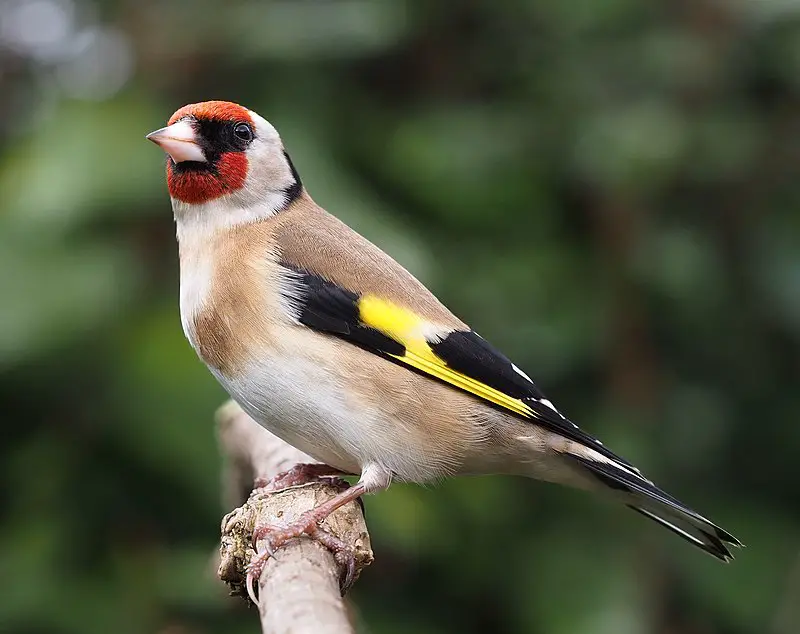
The European Goldfinch is a small passerine bird belonging to the finch family. It inhabits Europe, North Africa, western and central Asia but has been introduced in other places such as Australia, New Zealand and Uruguay.
The breeding male of this species can be easily identified by its red face with black markings around the eyes and black-and-white head.
Its back and flanks are buff or yellowish in color while it has white underparts which contrast well with its dark wings edged in white feathers.
This bird feeds on grains from plants like millet or sunflower seeds along with insects occasionally when available during summer months for food source.
In winter they flock together near sources of water where they find their food among weeds growing there at that time of year.Scientific classification:
| Kingdom | Animalia |
| Phylum | Chordata |
| Class | Aves |
| Order | Passeriformes |
| Family | Fringillidae |
| Subfamily | Carduelinae |
| Genus | Carduelis |
| Species | C. carduelis |
Also Featured In: Autumn Birds You Should Know, Common Birds in London
14. Red Kite
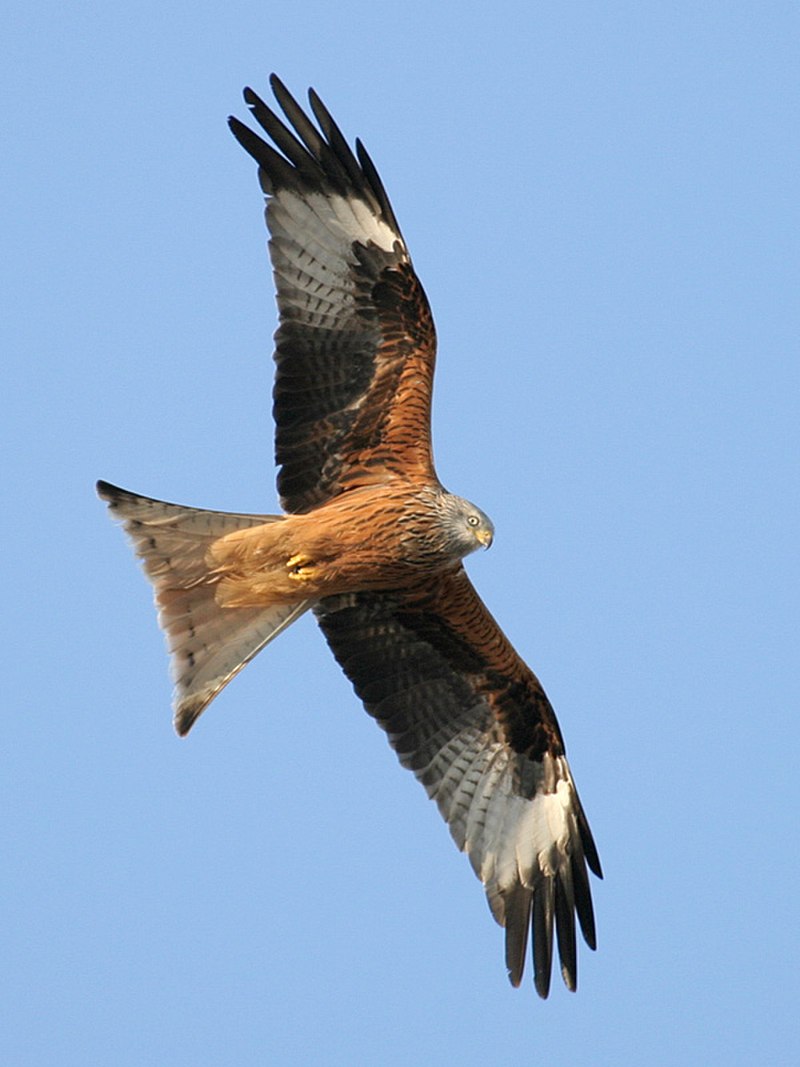
The Red Kite is a magnificent bird of prey, belonging to the family Accipitridae. It can be found in western Europe and northwest Africa where it breeds, while also occurring occasionally in northern Iran.
These birds are medium-large size with wingspans ranging from 125 – 170 cm wide. They have reddish brown plumage on their upperparts and pale gray underneath.
The Red Kite feeds mainly on small mammals, carrion and insects which they hunt for by soaring through the air using thermals to gain altitude before diving down onto its prey.
Furthermore, this species has adapted well to human presence since it often scavenges near roadsides or rubbish dumps as an easy source of food.
All things considered, these majestic creatures make up a beautiful part of our natural environment that should definitely not go unnoticed.Scientific classification:
| Kingdom | Animalia |
| Phylum | Chordata |
| Class | Aves |
| Order | Accipitriformes |
| Family | Accipitridae |
| Genus | Milvus |
| Species | M. milvus |
Also Featured In: Common Slovakian Birds, Scavengers Birds You Should Know
15. Eurasian Nuthatch
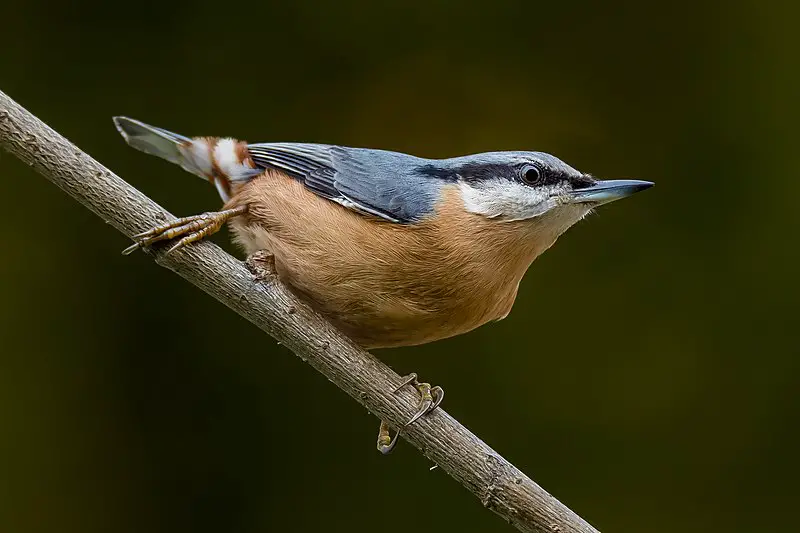
The Eurasian nuthatch is a small passerine bird found in the Palearctic region, most commonly in Europe. It has blue-gray upper parts, an orange-buff underbelly, and a black eye stripe.
The distinctive characteristic of this species is its loud dwip call which can be heard throughout its range.
This species has more than 20 subspecies divided into three main groups based on their geographical ranges.
Those from western regions having the buffest coloration while eastern birds are greyer overall.
They usually feed on insects and spiders but also eat nuts and seeds when available, often storing them for later use by wedging them into bark crevices or similar places to retrieve later as needed.Scientific classification:
| Kingdom | Animalia |
| Phylum | Chordata |
| Class | Aves |
| Order | Passeriformes |
| Family | Sittidae |
| Genus | Sitta |
| Species | S. europaea |
Also Featured In: Birds Found in Hungary,
16. Eurasian Curlew
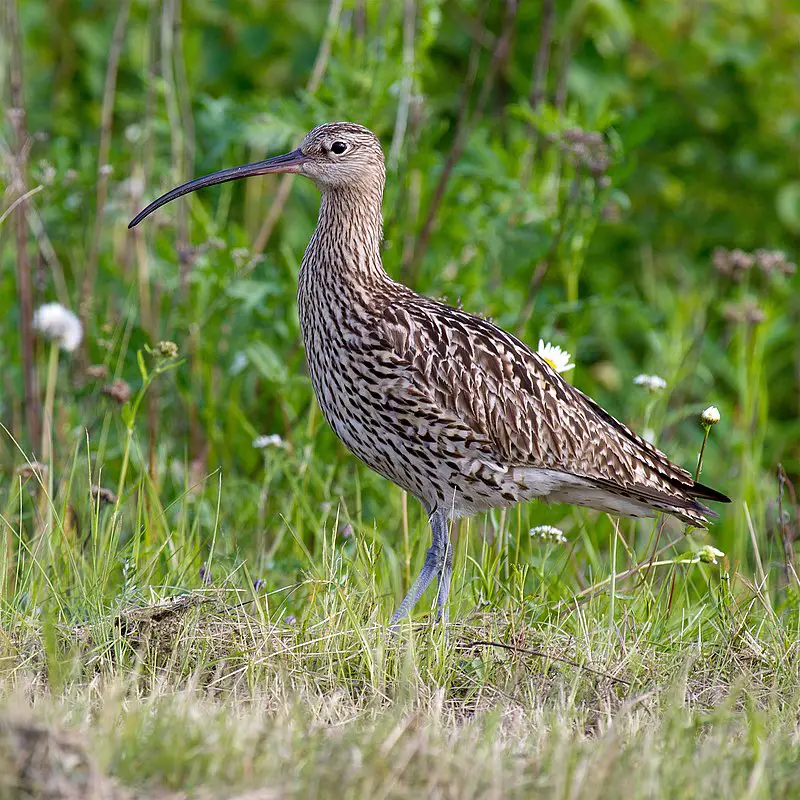
The Eurasian curlew is a wader bird belonging to the Scolopacidae family. It has an incredibly wide range, breeding across temperate Europe and Asia. This species can be easily identified by its long, curved bill and distinctive white underparts.
The male’s head typically appears striped while the female’s tends to be mottled brown in coloration with dark streaks on her neck and breast feathers.
With wingspans of almost two feet, these birds are quite large compared to other members of their genus.
Despite being so widespread they remain vulnerable due to ongoing habitat loss or degradation as well as hunting practices along migration routes or during wintering grounds visits.Scientific classification:
| Kingdom | Animalia |
| Phylum | Chordata |
| Class | Aves |
| Order | Charadriiformes |
| Family | Scolopacidae |
| Genus | Numenius |
| Species | N. arquata |
Also Featured In: Asian Birds, Birds of Orkney
17. Common Blackbird
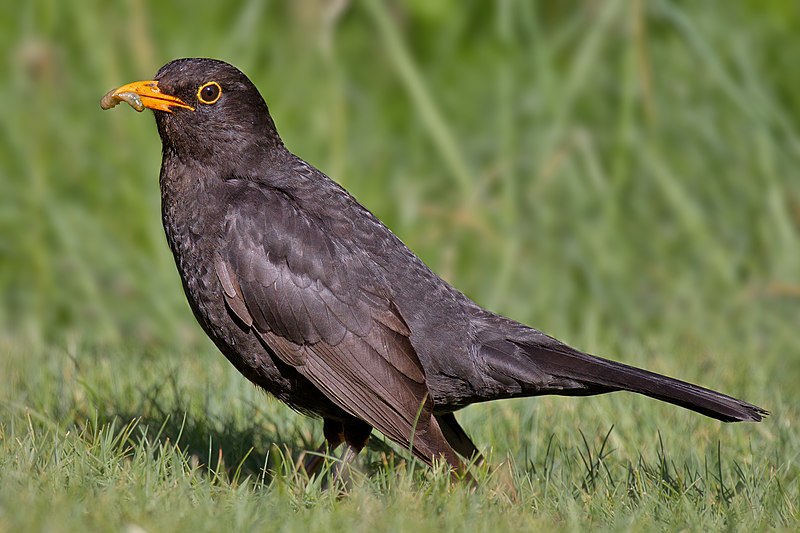
The Common Blackbird is a species of true thrush with the scientific name Turdus merula. Found in Europe, Asiatic Russia and North Africa it has also been introduced to Australia and New Zealand.
The male bird has glossy black plumage while the female’s coloration is more brownish gray.
It is known for its melodious song that can be heard throughout much of the year; typically they are seen alone or in pairs but occasionally form large flocks when food sources become available or during migration periods.
Its diet consists mainly of insects, worms, berries and other fruits as well as some human-provided foods such as bread crumbs or garbage scraps when available.
With its wide distribution range along with ease of adaptation to different habitats this species will likely remain one our most common birds around us.Scientific classification:
| Kingdom | Animalia |
| Phylum | Chordata |
| Class | Aves |
| Order | Passeriformes |
| Family | Turdidae |
| Genus | Turdus |
| Species | T. merula |
Also Featured In: Birds of United Kingdom, Most Common Nature Birds
18. Eurasian Blue Tit
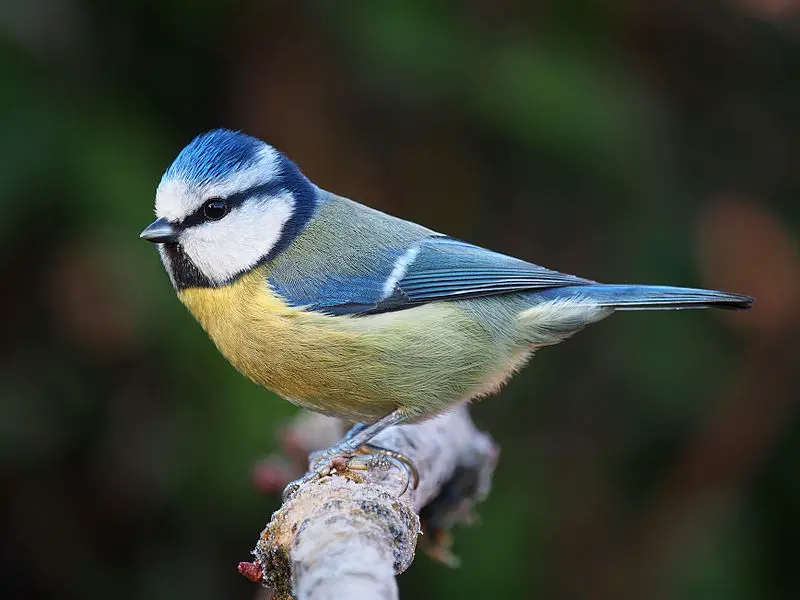
The Eurasian blue tit is a small passerine bird belonging to the Paridae family. Its bright blue and yellow plumage makes it easily recognizable, along with its small size.
They are usually resident birds that do not migrate, living throughout temperate or subarctic Europe and western Palearctic in deciduous woodlands.
These birds breed year-round and are common residents of these areas.
Their diet consists mainly of insects but they also feed on seeds during winter months when insects become scarce.
They can be found both alone or in pairs searching for food amongst trees branches, shrubs, grasses as well as visiting gardens for supplementary food sources such as peanut feeders provided by garden owners.Scientific classification:
| Kingdom | Animalia |
| Phylum | Chordata |
| Class | Aves |
| Order | Passeriformes |
| Family | Paridae |
| Genus | Cyanistes |
| Species | C. caeruleus |
Also Featured In: Fuerteventura Island Birds You Need to See,
19. Great Tit
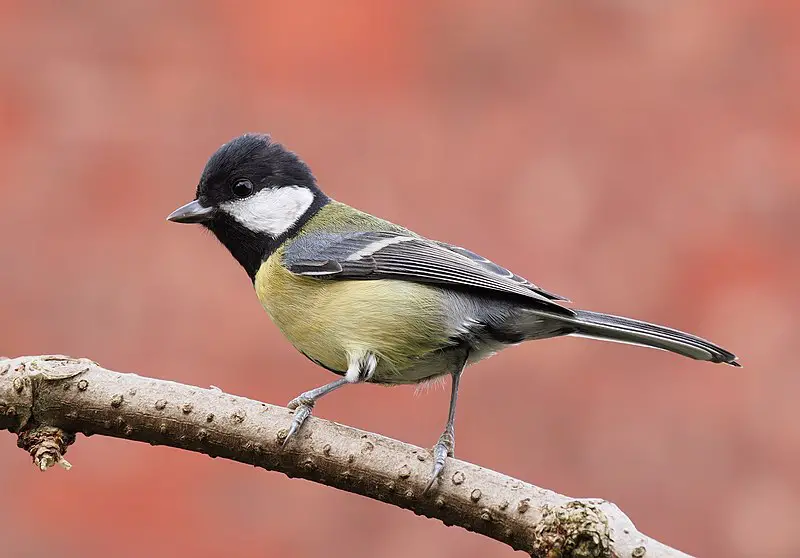
The Great Tit is a small passerine bird found in woodlands throughout Europe, the Middle East and Central Asia. Its beautiful black and white plumage with bold yellow or green patches make it easily distinguishable from other species of its family.
It generally does not migrate except for harsh winters but will stay resident in any kind of woodland area.
The diet consists mainly on insects, seeds and nuts which are found by searching through trees or scavenging from feeders placed near gardens.
Great Tits are also known to be clever problem solvers; they can open milk bottles left out unattended as well as cracking sunflower seeds that provide them essential nutrients during winter months when food is scarce.Scientific classification:
| Kingdom | Animalia |
| Phylum | Chordata |
| Class | Aves |
| Order | Passeriformes |
| Family | Paridae |
| Genus | Parus |
| Species | P. major |
Also Featured In: Spiritual Birds,
20. Common Wood Pigeon
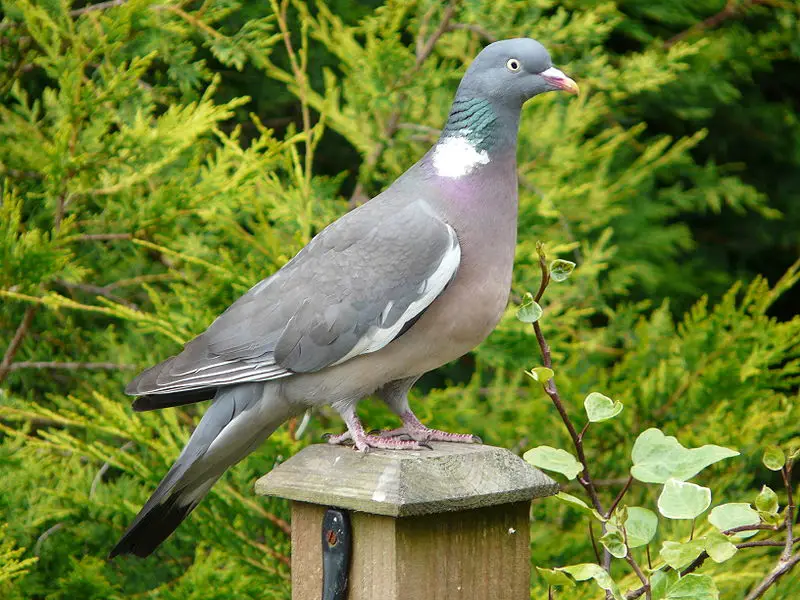
The Common Wood Pigeon is a large bird of the dove and pigeon family, native to the western Palearctic. It has grey plumage with white patches on its wings and neck.
Its head often appears darker than its body due to iridescence in some parts of its feathers. The male woodpigeons have pinkish breasts while females are more brownish-grey coloured.
These birds feed mainly on seeds, fruits, flowers and leaves but will also eat insects when available.
They breed during springtime producing 1-2 clutches per breeding season with two eggs each time which hatch after about 18 days incubation period by both parents taking turns for duty.
They make their nests from twigs collected from nearby trees or places close by and usually raise only one brood at a time making them an important part of nature’s balance as they help keep insect populations under control through their diet choices.Scientific classification:
| Kingdom | Animalia |
| Phylum | Chordata |
| Class | Aves |
| Order | Columbiformes |
| Family | Columbidae |
| Genus | Columba |
| Species | C. palumbus |
Also Featured In: Common Serbian Birds, Birds of Islamabad
21. Dunnock
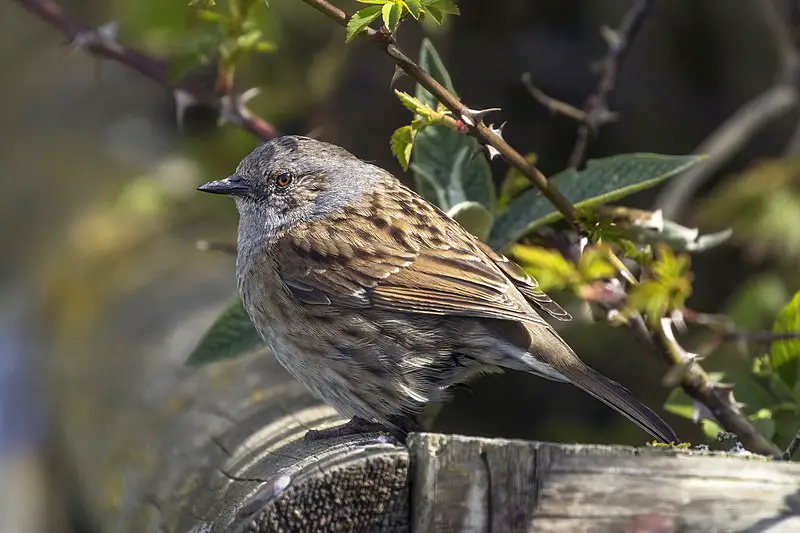
The Dunnock, also known as the Hedge Accentor, Hedge Sparrow and Hedge Warbler, is a small passerine bird found in temperate climates of Europe and Asia.
It has even been successfully introduced to New Zealand. The Dunnock stands out amongst its family members as it can thrive in many different habitats beyond just mountainous areas – making it more widespread than other birds of its kind.
With greyish-brown upper parts and whitish underparts with brown streaks on them; they are easily distinguished from their fellow species by their distinctive saucy call.
Often seen searching for food on the ground or darting around bushes looking for insects and worms; these lively little birds make an attractive addition to any garden or parkland setting.Scientific classification:
| Kingdom | Animalia |
| Phylum | Chordata |
| Class | Aves |
| Order | Passeriformes |
| Family | Prunellidae |
| Genus | Prunella |
| Species | P. modularis |
22. Common Chaffinch

The Common Chaffinch is a beautifully coloured small passerine bird belonging to the finch family.
The males have striking blue-grey caps and rust-red underparts, while the females are more subtle in their colouring but both possess two distinct white wing bars and white sides on their tails.
This gorgeous bird has an incredibly strong voice which can be heard for miles as it sings from exposed perches during mating season.
It lives mainly throughout Europe but also in parts of North Africa and Asia too, favouring woodland areas with plenty of shrubs or trees nearby where they find shelter amongst foliage when needed.
They feed predominantly on seeds from weeds or grains found within grasslands making them particularly useful birds for farmers who rely heavily upon pest control that these little ones provide.Scientific classification:
| Kingdom | Animalia |
| Phylum | Chordata |
| Class | Aves |
| Order | Passeriformes |
| Family | Fringillidae |
| Subfamily | Fringillinae |
| Genus | Fringilla |
| Species | F. coelebs |
Also Featured In: Birds that Calls in the Morning,
23. Balearic Shearwater
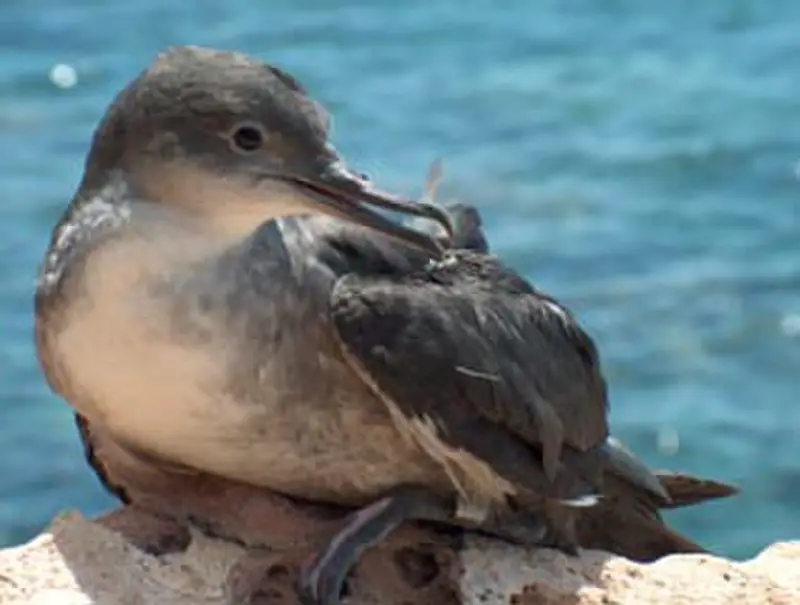
The Balearic shearwater is a medium-sized bird in the Procellariidae family, also known as puffins. It’s named after Mauretania, an old name for North Africa.
These birds can be found around islands and coasts of western Europe and northwest Africa.
They have long wings that help them to fly over vast distances during migration season from their breeding grounds to wintering areas farther south.
Their diet consists mainly of small fish which they catch by diving into the sea with great agility or plucking out of shallow waters while swimming on the surface.
When not mating or raising chicks, these birds live solitary lives at sea but gather together when feeding or roosting on land near coastal cliffsides and beaches where they nest in burrows underground lined with vegetation debris and feathersScientific classification:
| Kingdom | Animalia |
| Phylum | Chordata |
| Class | Aves |
| Order | Procellariiformes |
| Family | Procellariidae |
| Genus | Puffinus |
| Species | P. mauretanicus |
Also Featured In: Most Popular Birds in Mallorca,
24. Eurasian Sparrowhawk
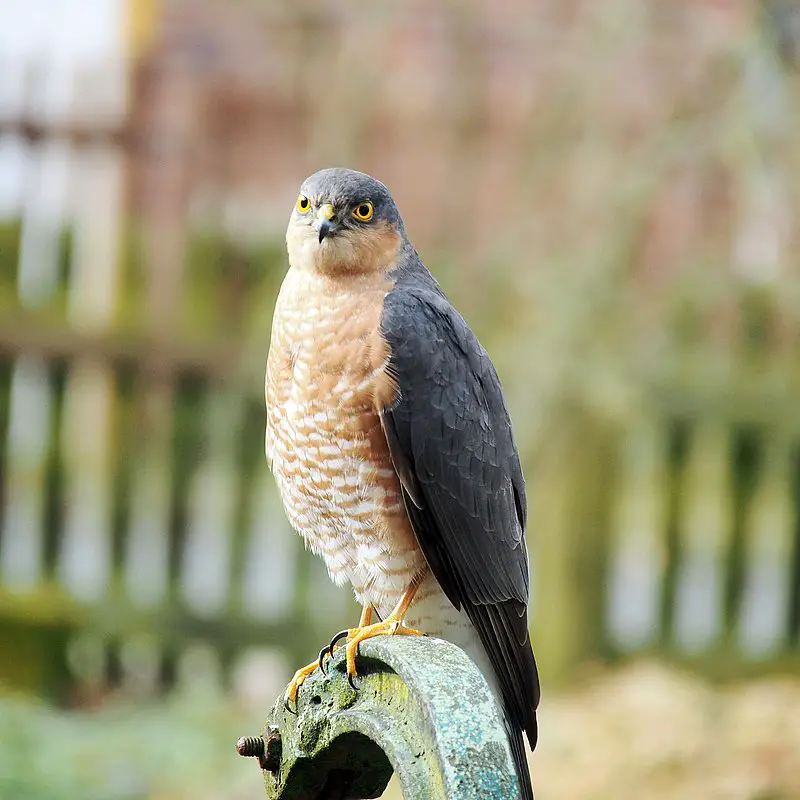
The Eurasian sparrowhawk is a small bird of prey belonging to the Accipitridae family. It has distinct blue-grey upperparts and orange barred underparts, while females and juveniles appear brown with brown barring underneath.
The female of this species can grow up to 25% larger than males which makes it one of the largest size differences among birds in its kind.
They are found all over Europe, Asia and North Africa where they hunt for quarry such as mammals, lizards or even other smaller birds using their powerful talons to catch them from aerial dives.
They have adapted well to human presence by nesting on buildings or urban parks due to lack natural habitats making them an interesting creature for wildlife observation across cities too.Scientific classification:
| Kingdom | Animalia |
| Phylum | Chordata |
| Class | Aves |
| Order | Accipitriformes |
| Family | Accipitridae |
| Genus | Accipiter |
| Species | A. nisus |
Also Featured In: Moscow Birds You Need to See, Common Carnivore Birds
25. Song Thrush
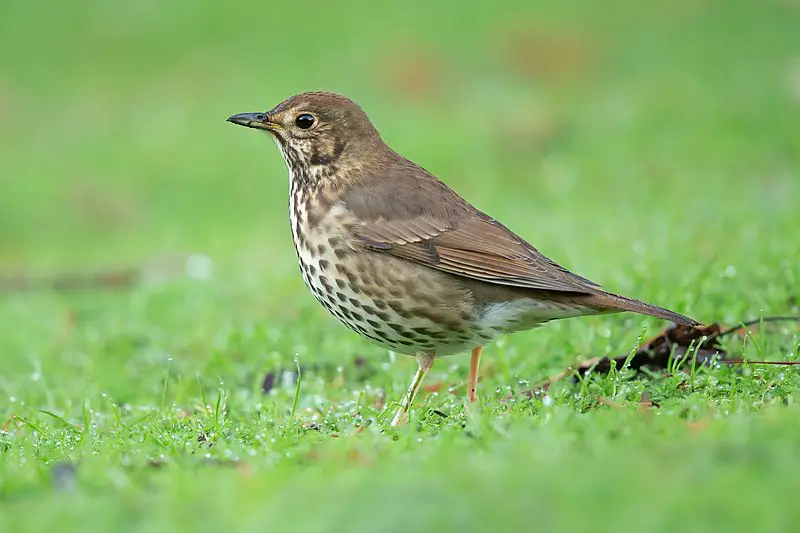
The Song Thrush is a beautiful bird that breeds across the West Palearctic. It has brown upper-parts and creamy or buff underparts with black spots, as well as three recognised subspecies.
Its vocalisations are particularly melodious; its song consists of repeated musical phrases, hence why it has been referenced often in poetry.
This species can be found breeding in forests, gardens and parks during summertime months before migrating elsewhere for winter.
With its attractive plumage and lovely singing voice, it’s no wonder this thrush is so beloved by many.Scientific classification:
| Kingdom | Animalia |
| Phylum | Chordata |
| Class | Aves |
| Order | Passeriformes |
| Family | Turdidae |
| Genus | Turdus |
| Species | T. philomelos |
Also Featured In: Black Birds in New Zealand,
26. Common Buzzard
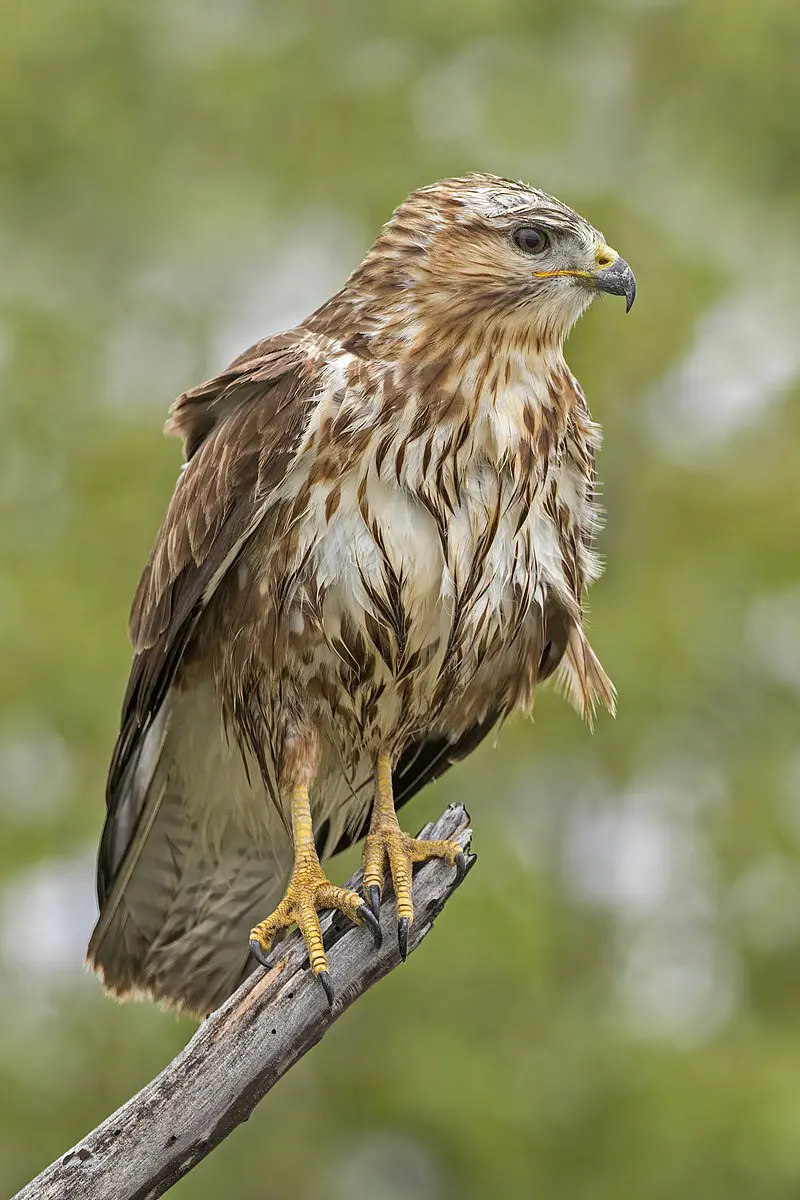
The common buzzard is a large bird of prey found across much of Europe, the Palearctic region and parts of Asia. This species has medium to dark brown plumage with lighter streaks on its body.
It has broad wings which are useful for soaring high in search of food such as small rodents, lizards, amphibians and insects.
Buzzards often hunt from a perch or while hovering above open areas like fields and meadows where they can easily spot their prey below.
They also take advantage of thermals rising up from warm ground during hot summer days to gain altitude without expending energy flapping their wings.
In addition to hunting alone, these birds will sometimes join forces with others when scavenging carrion or chasing away predators that threaten their nests full of eggs or young chicksScientific classification:
| Kingdom | Animalia |
| Phylum | Chordata |
| Class | Aves |
| Order | Accipitriformes |
| Family | Accipitridae |
| Genus | Buteo |
| Species | B. buteo |
Also Featured In: Birds of Wales: Exploring Diverse Habitats and Conservation Efforts, Most Common Birds of San Miguel Island
27. Eurasian Jay
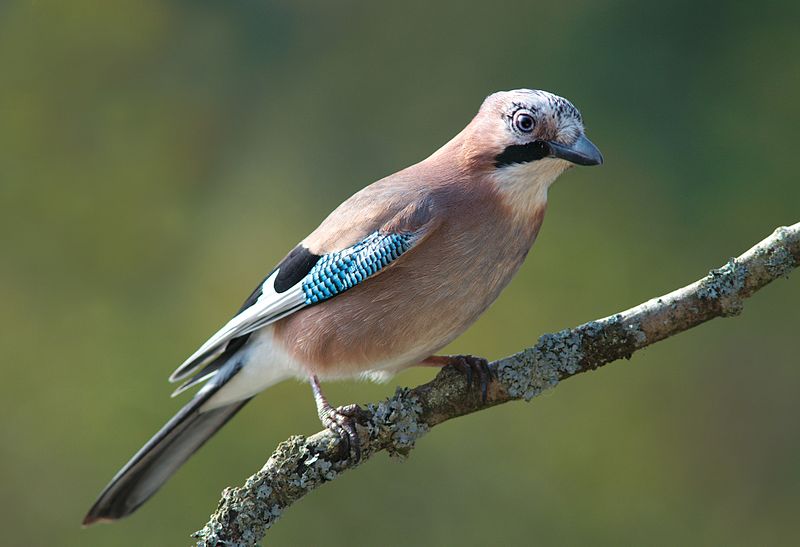
The Eurasian jay is a beautiful passerine bird of the crow family, Corvidae. It has bright pinkish brown plumage with white throat and two black stripes on each side.
The upper wings have an eye-catching blue panel while its tail is all black in color. This species mainly resides in woodlands, spanning over vast regions from western Europe to India and even north-west Africa.
Its diet consists of small invertebrates like insects as well as fruits, seeds and nuts making it quite adaptable when it comes to food sources.
With its loud calls echoing through the forests they inhabit, this amazing creature will definitely make your day brighter if you ever get the chance to spot one.Scientific classification:
| Kingdom | Animalia |
| Phylum | Chordata |
| Class | Aves |
| Order | Passeriformes |
| Family | Corvidae |
| Genus | Garrulus |
| Species | G. glandarius |
28. Crested Tit
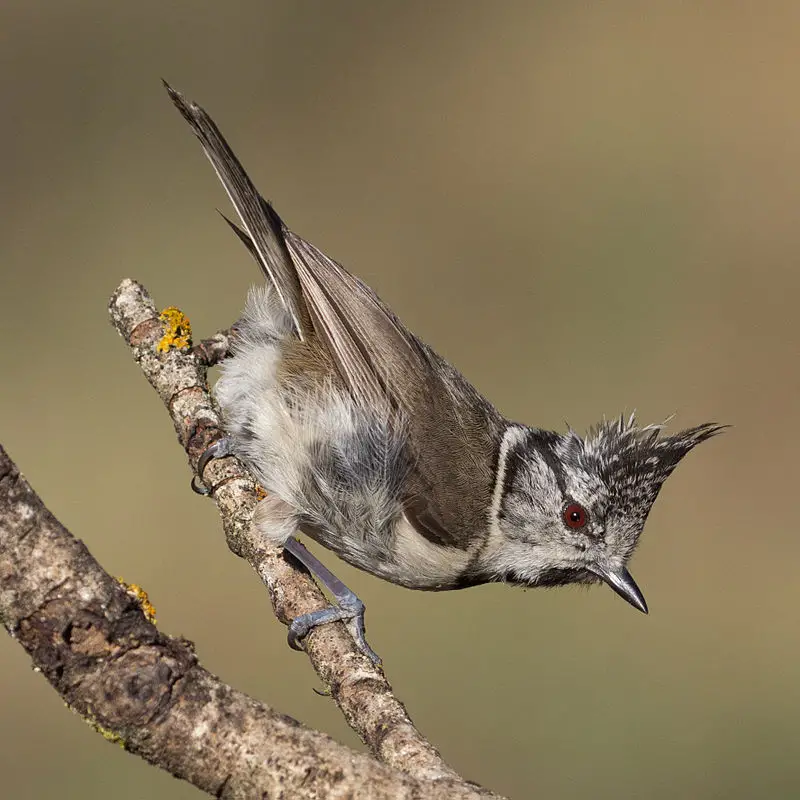
The Crested tit is a beautiful bird found in Europe. It belongs to the family Paridae and its scientific name is Lophophanes cristatus.
This species can be seen mainly in coniferous forests of northern and central Europe, as well as deciduous woodlands of France and the Iberian peninsula.
The most prominent feature of this species is its crest which makes it easily identifiable from other birds in the area. Its diet consists mostly of insects, seeds, berries and nuts – all essential nutrients for their survival.
In Great Britain, they are primarily found inhabiting ancient pinewoods such as Inverness or Straffordshire where you may catch sight of them if you’re lucky.
All-in-all these striking little creatures make an exciting addition to any nature enthusiast’s list – so keep your eyes peeled next time you go out exploring.Scientific classification:
| Kingdom | Animalia |
| Phylum | Chordata |
| Class | Aves |
| Order | Passeriformes |
| Family | Paridae |
| Genus | Lophophanes |
| Species | L. cristatus |
Also Featured In: Most common Birds in France,
29. Eurasian Blackcap
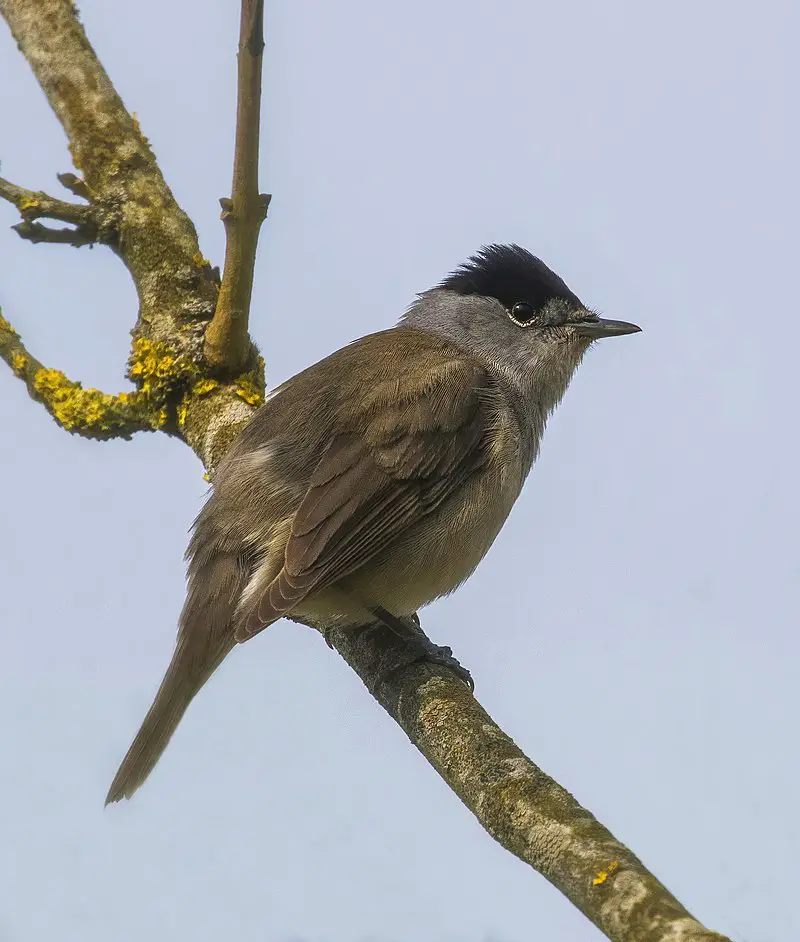
The Eurasian blackcap is a typical warbler, found across Europe and Asia. It has mainly olive-grey upperparts and pale grey underparts. The male has a striking black cap while the female’s is reddish brown in colour.
Males have an attractive song which is usually a rich musical warbling heard during the breeding season.
Blackcaps are small birds with short tails, long wings, stout bills and large feet – perfect for their insectivorous diet of spiders, beetles and other invertebrates they find as they hop along forest floors or among shrubs.
As well as eating insects they also feed on fruits such as elderberries at certain times of year to gain extra energy reserves before migrating southwards to warmer climates over winter months where food sources may be scarce or harder to find.Scientific classification:
| Kingdom | Animalia |
| Phylum | Chordata |
| Class | Aves |
| Order | Passeriformes |
| Family | Sylviidae |
| Genus | Sylvia |
| Species | S. atricapilla |
Also Featured In: Bulgarian Birds, Common Denmark Birds
30. Mute Swan
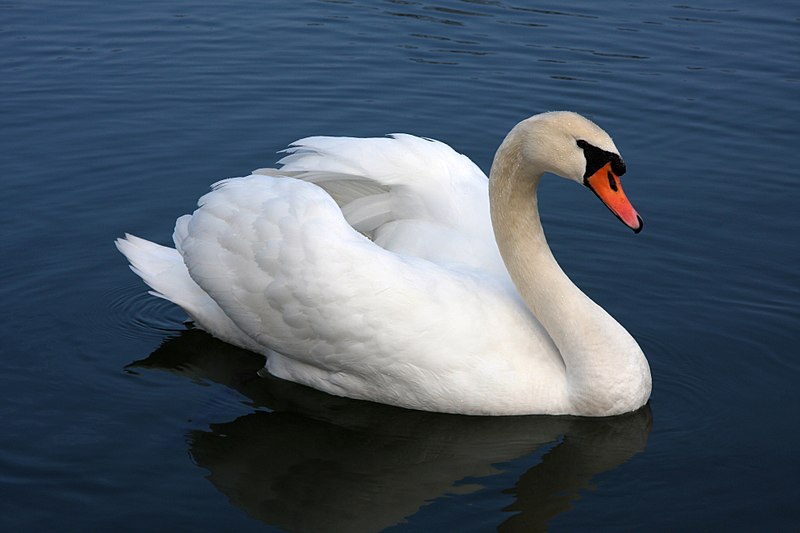
The Mute Swan is a species of swan belonging to the waterfowl family Anatidae. It can be found in much of Eurosiberia, as well as North America, Australasia and southern Africa where it has been introduced.
The ‘mute’ part of its name comes from its soft call which is more muffled than that of other swans.
They have an almost entirely white plumage with black legs and feet and an orange bill with a distinctive knob at the base.
These striking birds are large in size reaching up to 1 metre tall when fully grown with wingspans reaching 3 metres or more.
In flight they hold their necks arched gracefully above their body while beating powerful wings slowly through the air – creating quite a spectacle.Scientific classification:
| Kingdom | Animalia |
| Phylum | Chordata |
| Class | Aves |
| Order | Anseriformes |
| Family | Anatidae |
| Genus | Cygnus |
| Species | C. olor |
Also Featured In: Water Birds Live around Us, Tundra Birds
31. Great Bustard
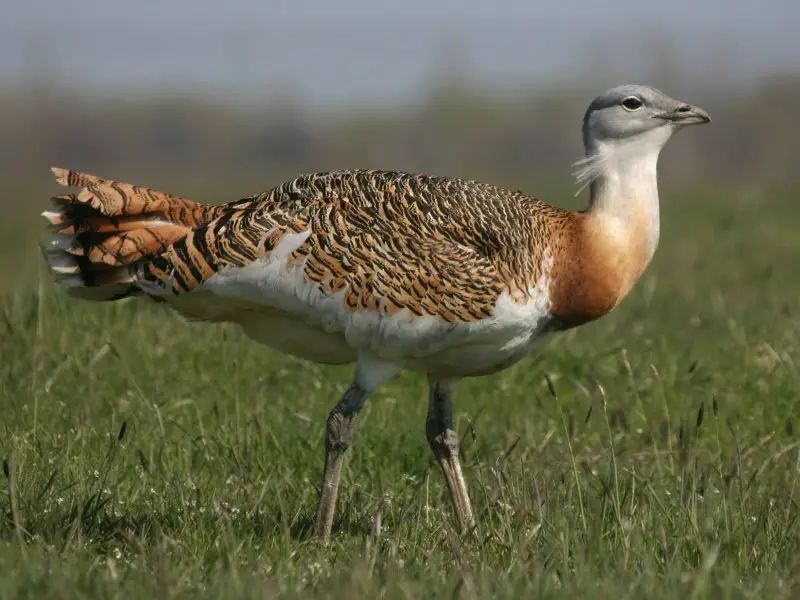
The Great Bustard is a large bird found in open grasslands and farmland across Europe, Central Asia and northern Morocco.
It has a distinctive appearance – its feathers are grey-brown with white below the neck while its head is dark brown.
The species was listed as Vulnerable on the IUCN Red List in 1996 due to population declines caused by habitat loss, overhunting and illegal trade of eggs or chicks.
Conservation efforts provide hope for this majestic creature’s future – some European countries have reintroduced them back into their native habitats through captive breeding programs.
There’s no doubt that we must protect these beautiful birds if they’re to continue soaring majestically above our landscapes for years to come.Scientific classification:
| Kingdom | Animalia |
| Phylum | Chordata |
| Class | Aves |
| Order | Otidiformes |
| Family | Otididae |
| Genus | Otis |
| Species | O. tarda |
Also Featured In: Native South Korean Birds, Birds You’ll Find in Moldova
32. Cinereous Vulture
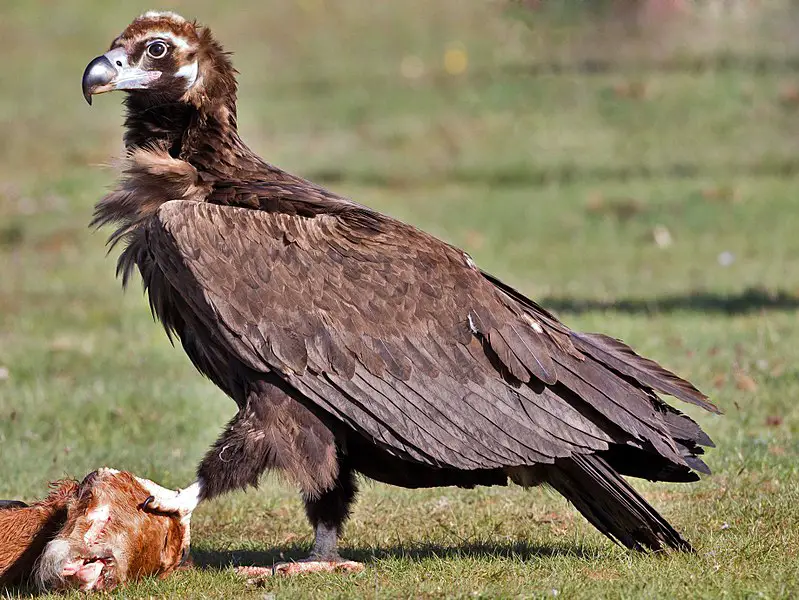
The cinereous vulture, also known as the black vulture, monk vulture and Eurasian black vuture is a large raptor found in temperate Eurasia. It has an impressive wingspan of 3.1 metres (10 feet) with a body length of 1.2 metres (3 ft 11in).
They are the largest Old World Vultures and can reach weights up to 14 kilograms(31 lbs).
Their diet consists mainly of carrion but they have been recorded taking live prey such as rodents or hares which allows them to search for food over wide areas quickly.
These birds usually hunt alone during daylight hours due their eyesight being well adapted at picking out carcasses from far away distances while soaring high in the sky above open grasslands or wooded hillsides where they breed seasonally between late winter and early autumn typically laying one egg per pair each year.Scientific classification:
| Kingdom | Animalia |
| Phylum | Chordata |
| Class | Aves |
| Order | Accipitriformes |
| Family | Accipitridae |
| Genus | Aegypius |
| Species | A. monachus |
Also Featured In: Big Birds that Live in Singapore,
33. Spanish Imperial Eagle
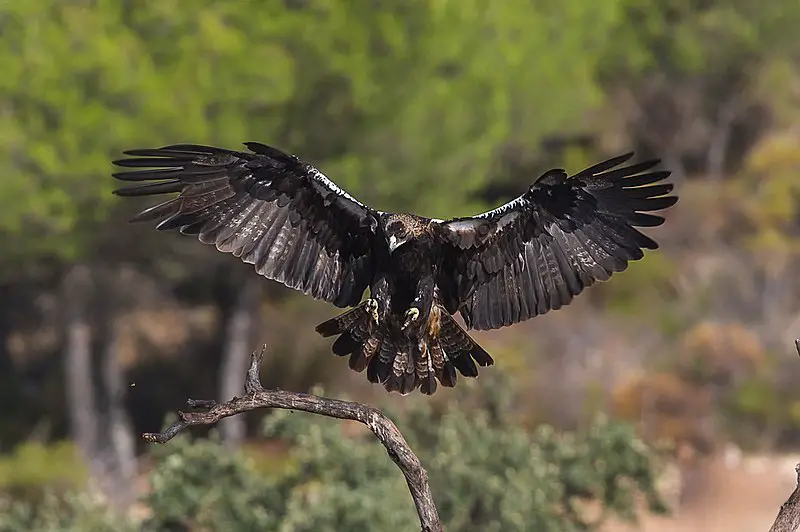
The Spanish imperial eagle is a majestic species of bird native to the Iberian Peninsula. Also known as Adalbert’s Eagle, it was named after Prince Adalbert of Bavaria and can be identified by its distinct white-shouldered “epaulettes”.
This stunning raptor typically features dark brown plumage with light golden feathers on their chest and wings, along with bright yellow eyes and legs.
Measuring up to 75 cm in length with a wingspan of around 1.8 m, these birds are powerful predators equipped for hunting small mammals or carrion found within their forest habitat.
Although formerly considered a subspecies of the Golden eagle due to similarities in size and appearance, research has since proven that this unique species deserves full recognition on its own merits.Scientific classification:
| Kingdom | Animalia |
| Phylum | Chordata |
| Class | Aves |
| Order | Accipitriformes |
| Family | Accipitridae |
| Genus | Aquila |
| Species | A. adalberti |
Also Featured In: Imperial Birds You Should Know,
34. Eurasian Wren
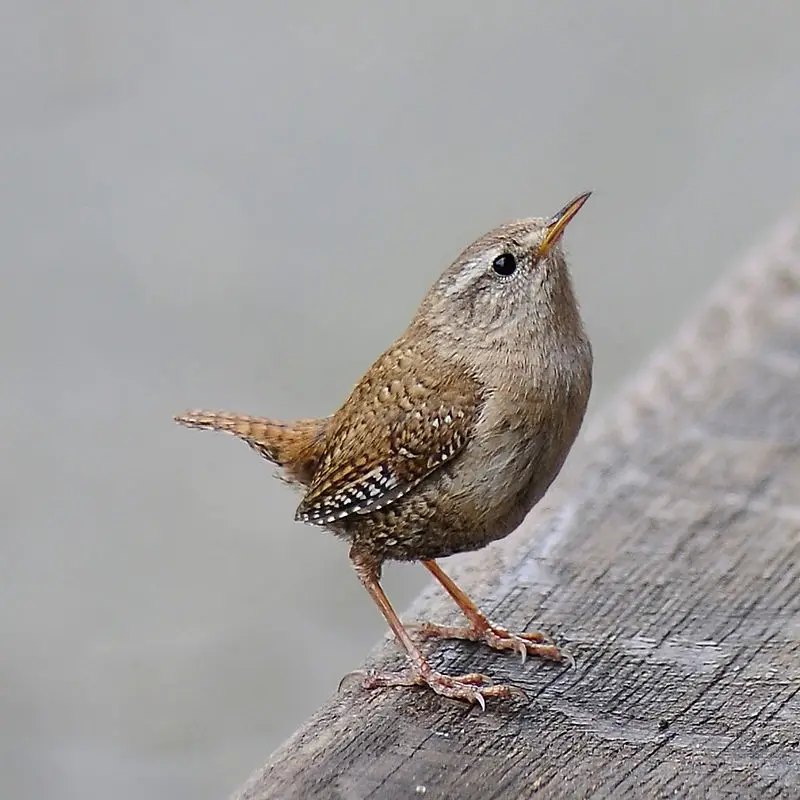
The Eurasian Wren is a small, insectivorous bird that can be found throughout Europe and Africa.
It has russet-brown upperparts with paler buff-brown underparts and its most notable feature is its short tail which it holds upright in flight or when perched.
Its neck is also quite short while the bill tends to be long and thin.
The species prefers dense vegetation like hedgerows, woodland edges and parks as well as coastal areas where there are plenty of insects for them to feed on such as spiders, beetles, caterpillars etc..
Their song consists mainly of high notes that vary between regions but usually ends with four or five repeated trills – making them an easily identifiable addition to any garden.Scientific classification:
| Kingdom | Animalia |
| Phylum | Chordata |
| Class | Aves |
| Order | Passeriformes |
| Family | Troglodytidae |
| Genus | Troglodytes |
| Species | T. troglodytes |
Also Featured In: Birds of Poland, Yakushima Island Birds You Should Know
35. Eastern Imperial Eagle
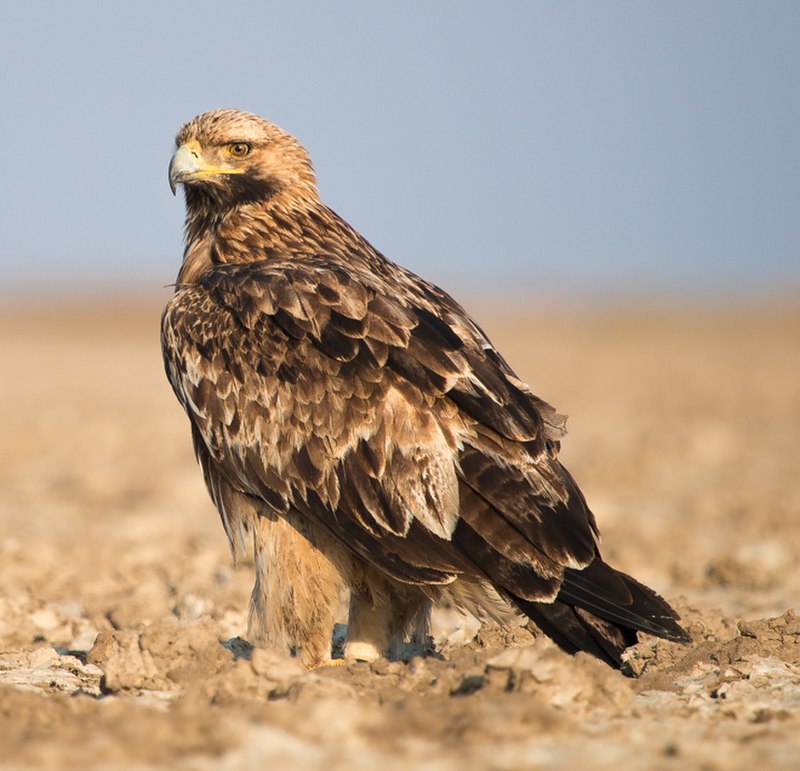
The Eastern Imperial Eagle is a majestic bird of prey, with striking features and sharp eyesight.
It breeds in southeastern Europe and throughout West and Central Asia, before migrating south to winter in Africa, the Middle East or South/East Asia.
This eagle belongs to the Accipitridae family – known for their well-feathered legs – allowing them great agility when hunting their prey which includes rabbits, hares and small mammals among other birds.
They have brown wings bordered by white feathers which gives it an elegant appearance that stands out from its environment.
In recent years there has been some concern about declining numbers due to loss of habitat or illegal poaching; however conservation efforts are underway to ensure this beautiful species continues into future generations.Scientific classification:
| Kingdom | Animalia |
| Phylum | Chordata |
| Class | Aves |
| Order | Accipitriformes |
| Family | Accipitridae |
| Genus | Aquila |
| Species | A. heliaca |
Also Featured In: Common Birds in Saudi Arabian, Lebanon Birds Live in Semi-Desert Areas
36. Black-Tailed Godwit
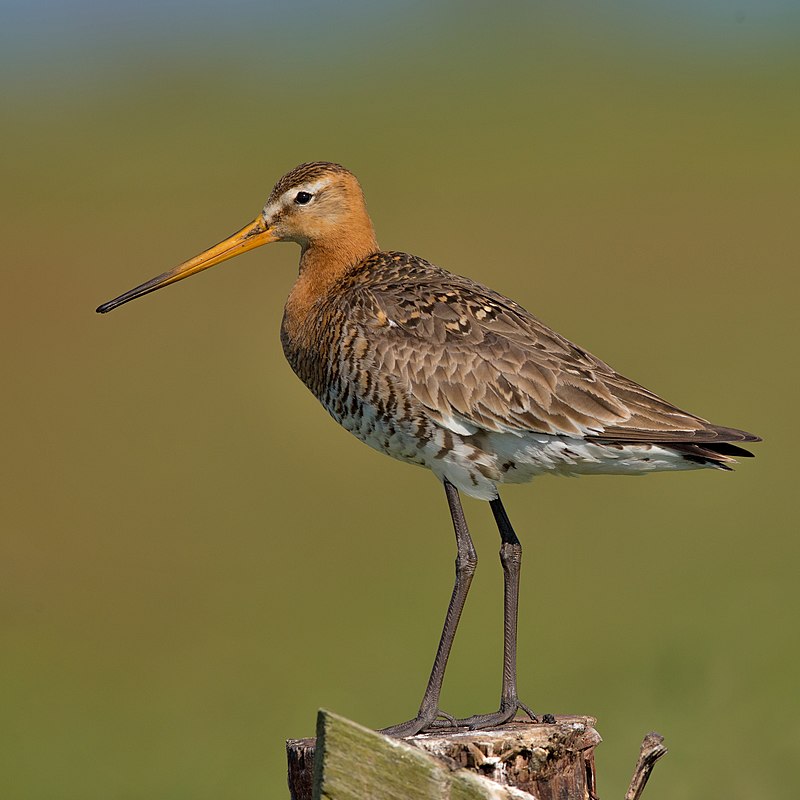
The Black-tailed Godwit is a species of large shorebird that was first described by Carl Linnaeus in 1758.
These beautiful birds have an orange head, neck and chest during breeding season while they turn to grey-brown coloration in winter.
They are easily identifiable due their black and white wingbar throughout the year. As for its habitat, these godwits breed mostly on Iceland but also across Europe, eastward through Asia Minor all the way to Mongolia; some even winter further south in Africa or India.
The Godwit has adapted well to human presence as it can be found close to wetlands near farms or villages where plenty of food is available from ploughed fields.
It’s really amazing how such a majestic bird with colorful plumage manages so successfully at this day and age.Scientific classification:
| Kingdom | Animalia |
| Phylum | Chordata |
| Class | Aves |
| Order | Charadriiformes |
| Family | Scolopacidae |
| Genus | Limosa |
| Species | L. limosa |
Also Featured In: Birds in Sri Lanka, Estuaries Birds
37. Fieldfare
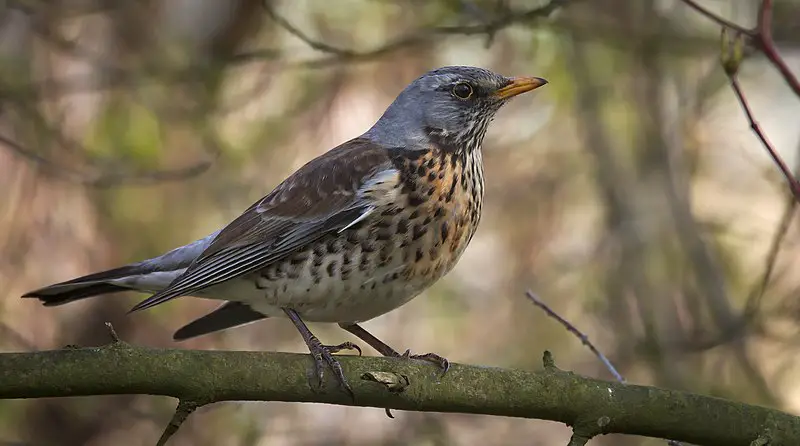
The Fieldfare is a member of the thrush family, known for its vibrant plumage. It breeds in woodlands and scrub across Europe, but it’s a rare breeder in Britain & Ireland.
During winter months it migrates southwards to countries such as North Africa and the Middle East where winters are milder.
The bird has grey-brown upperparts with black spots on its wings and tail feathers; these contrast sharply against its off-white underparts which have orange streaks running along them.
When threatened or startled they give an alarm call that sounds like ‘tchack’. This species feeds mainly on berries from shrubs during autumn and winter before returning to their breeding grounds in springtime.Scientific classification:
| Kingdom | Animalia |
| Phylum | Chordata |
| Class | Aves |
| Order | Passeriformes |
| Family | Turdidae |
| Genus | Turdus |
| Species | T. pilaris |
Also Featured In: Birds of Czech Republic,
38. Rock Partridge
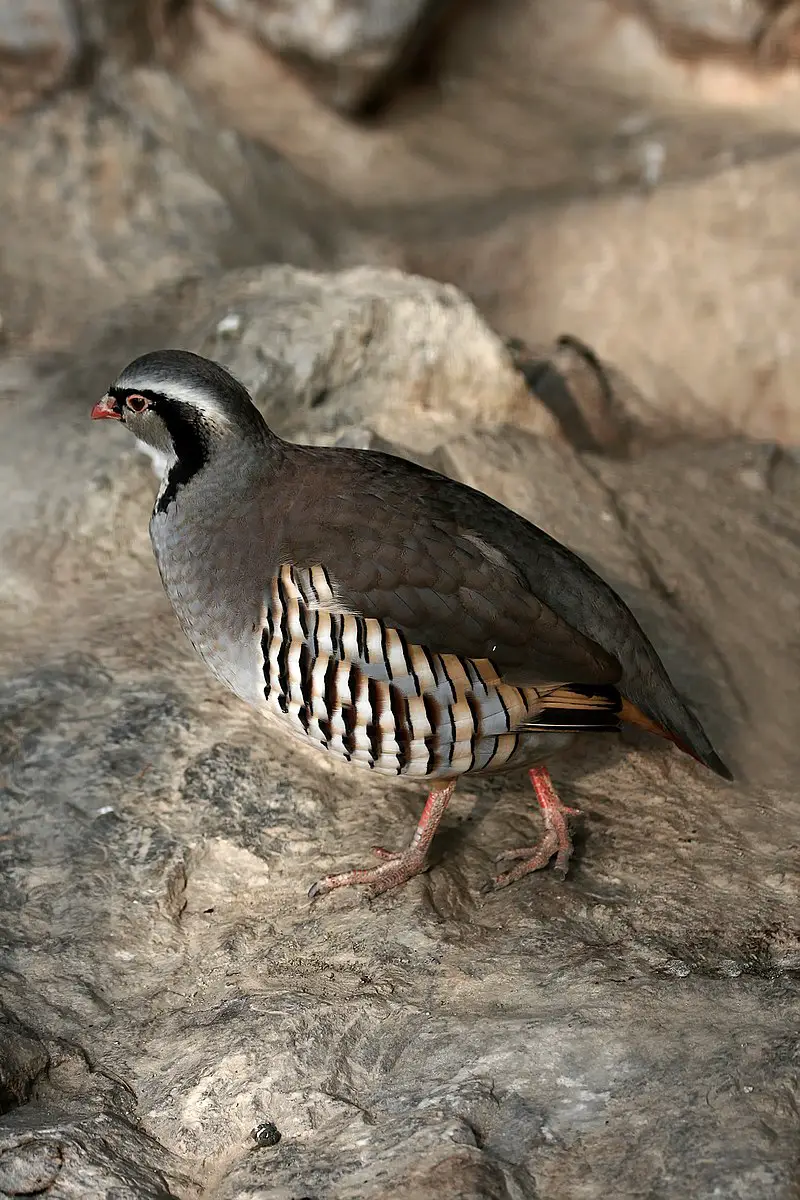
The Rock Partridge is a gamebird in the pheasant family and is native to southern Europe. It closely resembles its eastern counterpart, the Chukar Partridge.
This bird resides in dry and open hillsides, where it builds its nest on a shallow ground scrape that’s only lightly lined with material for insulation.
The rock partridge has long been an important species of prey among hunters due to its size as well as being relatively easy to find during hunting expeditions.
Although these birds are not endangered at present, their population numbers have declined significantly over recent years due to poaching and habitat destruction caused by human activities such as farming or urbanization projects.
Conservation efforts must be taken if we want this unique species of bird stay around us for future generations.Scientific classification:
| Kingdom | Animalia |
| Phylum | Chordata |
| Class | Aves |
| Order | Galliformes |
| Family | Phasianidae |
| Genus | Alectoris |
| Species | A. graeca |
Also Featured In: Most Beautiful birds of Greece, Birds Commonly Found in Slovenia
39. Lesser Kestrel
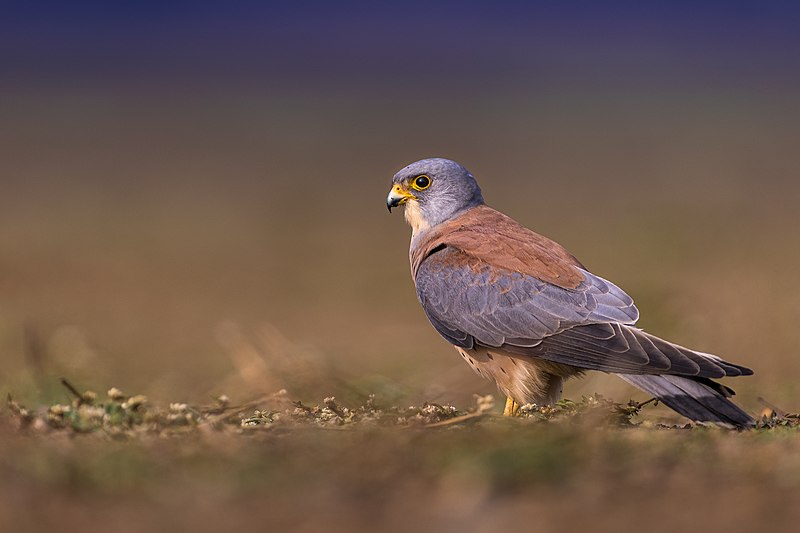
The Lesser Kestrel is a small falcon species that breeds in various regions of the Mediterranean, Afghanistan, Central Asia, China and Mongolia. During summer they migrate to Africa, Pakistan and even India or Iraq.
The population of this bird has been declining in its European range but it remains rare north of its breeding locations.
Its genus name “Falco” derives from Late Latin meaning sickle which describes their curved beak shape used for hunting prey like insects or lizards.
Their diet also consists mainly on seeds and grains as well as some fruits when available making them versatile hunters able to survive different climates where food may vary seasonally.Scientific classification:
| Kingdom | Animalia |
| Phylum | Chordata |
| Class | Aves |
| Order | Falconiformes |
| Family | Falconidae |
| Genus | Falco |
| Species | F. naumanni |
40. Lanner Falcon
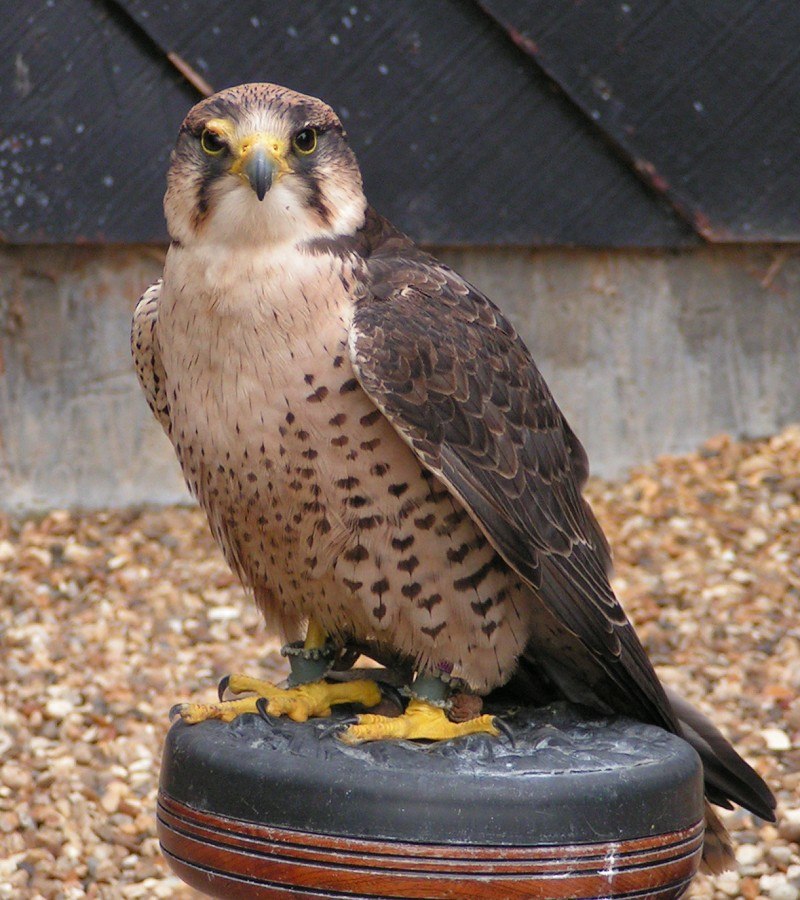
The Lanner falcon is a medium-sized bird of prey found throughout Africa, southeast Europe and parts of Asia. It has a wingspan up to 42 inches and is typically slate gray with chestnut accents on its upper body.
This majestic creature prefers open habitat such as grasslands or savannas providing them ample hunting opportunities for small birds, bats and even large insects.
The species was first described by Dutch zoologist Coenraad Jacob Temminck in 1825 under the scientific name Falco biarmicus.
Thanks to conservation efforts this magnificent raptor remains abundant in some regions today though it does face threats from loss of habitat due to human development activities as well as illegal trapping for use within the sport hunting industry.Scientific classification:
| Kingdom | Animalia |
| Phylum | Chordata |
| Class | Aves |
| Order | Falconiformes |
| Family | Falconidae |
| Genus | Falco |
| Subgenus | Hierofalco |
| Species | F. biarmicus |
Also Featured In: Native Birds Of Libya,
41. Willow Warbler
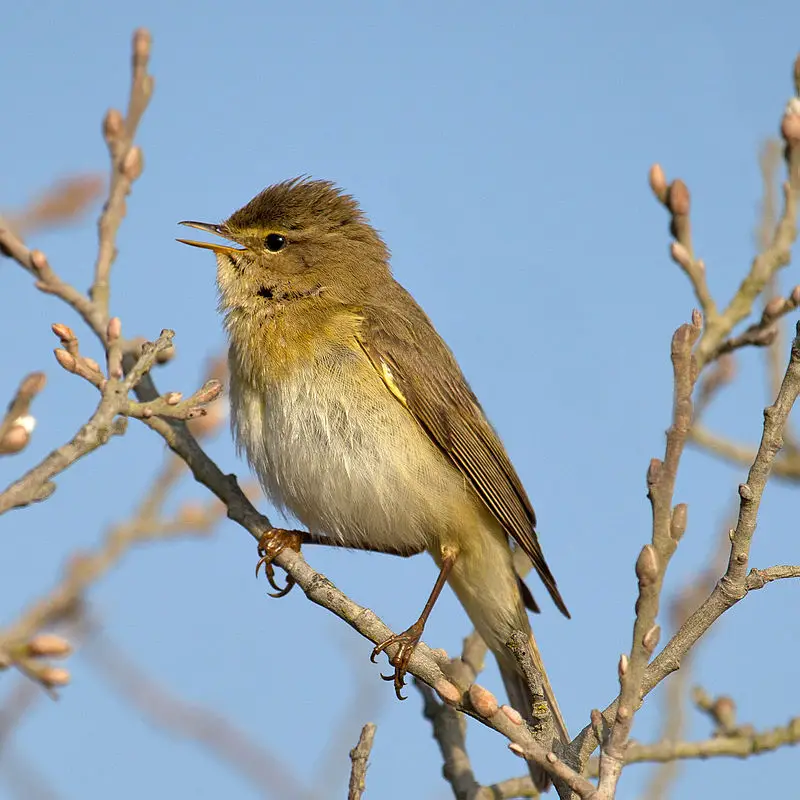
The Willow warbler is a small, colorful bird found throughout much of northern and temperate Europe. It has yellowish upperparts and whitish underparts with brown streaks on its breast.
In the summer months it migrates to breed in open woodlands with trees for nesting.
During winter season, most of the population fly south to sub-Saharan Africa where they will stay until spring comes around again when they make their way back northward once more.
They feed mainly on insects but also sometimes eat seeds or berries during the colder months when food can be scarce.
The Willow Warbler is an important part of our ecosystem as many birds rely upon them for food while migrating through different areas across Europe each year.Scientific classification:
| Kingdom | Animalia |
| Phylum | Chordata |
| Class | Aves |
| Order | Passeriformes |
| Family | Phylloscopidae |
| Genus | Phylloscopus |
| Species | P. trochilus |
Also Featured In: Norway Birds, Willows Birds Around You
42. European Herring Gull
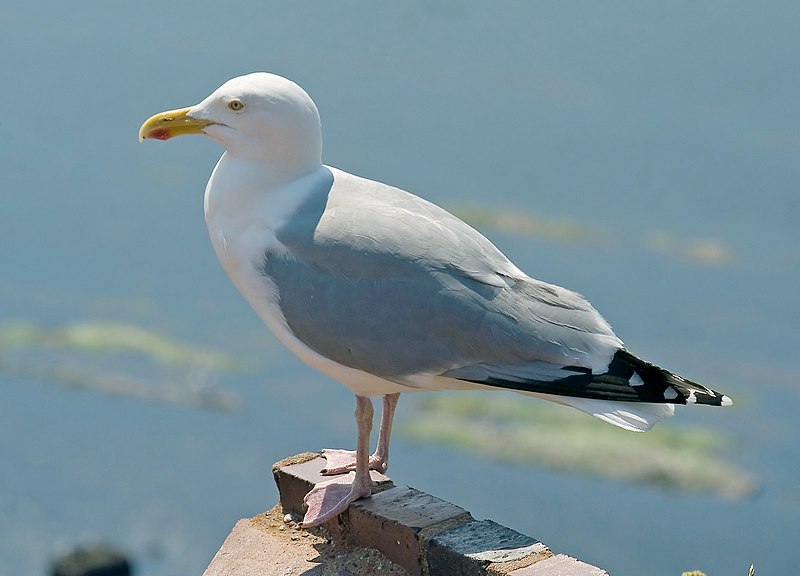
The European herring gull is one of the most recognizable birds, easily spotted along the shorelines of Western Europe.
It has a wingspan up to 66 cm long and can be found nesting across Northern Europe, Central Europe, Eastern Europe and Scandinavia.
During colder months many European herring gulls migrate further south in search for warmer temperatures which allows them to survive better during wintertime.
As scavengers they often take advantage of human debris or waste as food sources near populated areas such as beaches, parks and cities; however their diet also consists on fish, insects and other small animals that live nearby coastal regions.
Despite being common in some parts of its range this species may have experienced population declines due to habitat loss caused by human activities like urbanization but still remains abundant in others thanks to conservation efforts implemented over time by local authorities all around the world.Scientific classification:
| Kingdom | Animalia |
| Phylum | Chordata |
| Class | Aves |
| Order | Charadriiformes |
| Family | Laridae |
| Genus | Larus |
| Species | L. argentatus |
Also Featured In: Ireland Birds, Birds of Nova Scotia
43. Grey-Headed Woodpecker
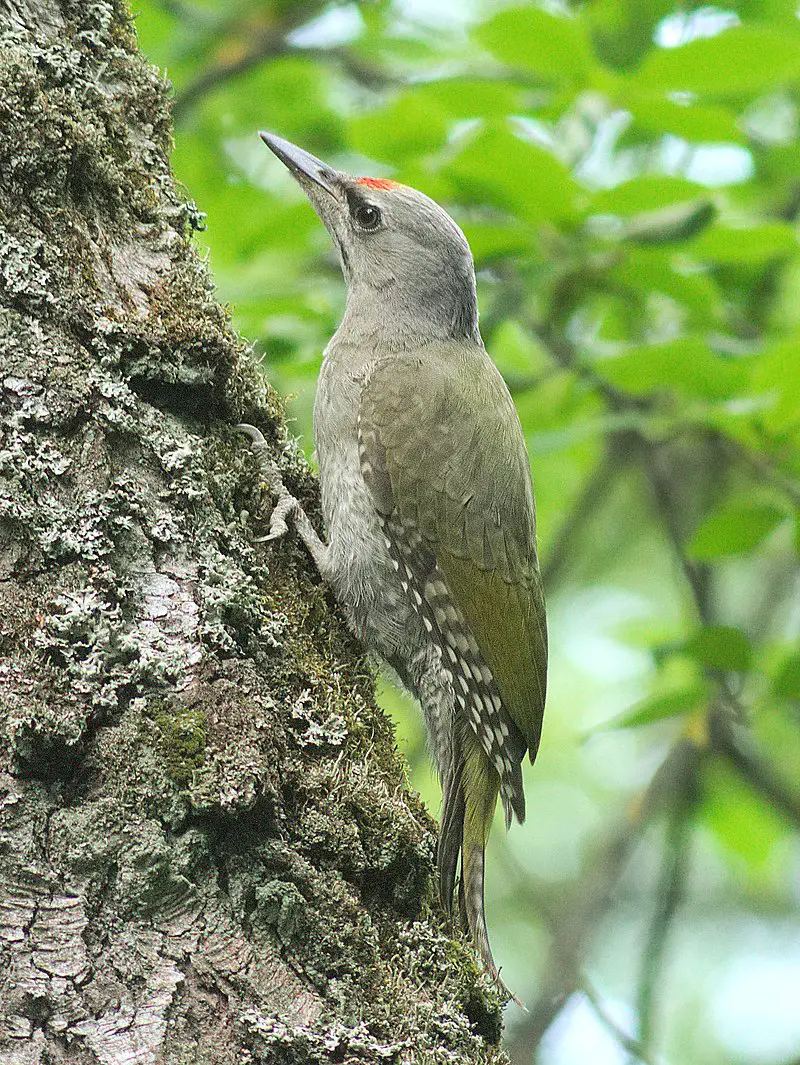
The Grey-headed Woodpecker is a species of bird found in the Eurasian region, belonging to the family Picidae.
It has distinctive grey feathers on its head and back, making it easily identifiable compared to other woodpeckers.
This species can be seen across large parts of Europe and Central Asia, all the way up into Northern Siberia.
The diet consists mainly of small insects such as ants and beetles which they locate by tapping or drilling holes into tree bark looking for larvae underneath; this behaviour also helps them find nesting cavities within trees for their homes.
They are very social creatures that like to live in groups with many birds from different generations living together at once.Scientific classification:
| Kingdom | Animalia |
| Phylum | Chordata |
| Class | Aves |
| Order | Piciformes |
| Family | Picidae |
| Genus | Picus |
| Species | P. canus |
Also Featured In: Luxembourg birds,
44. Manx Shearwater
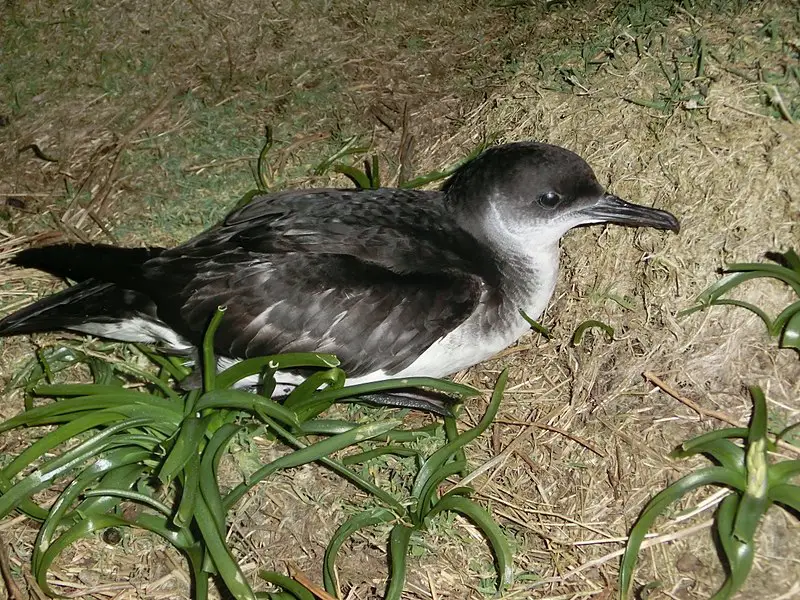
The Manx Shearwater is a mid-sized seabird that belongs to the Procellariidae family. Its scientific name records an old English term, ‘Manks puffin’, used in the 17th century for shearwaters’ cured carcasses.
The Atlantic Puffin acquired its unique name much later due to their similar appearance.
These birds breed on coastal cliffs and islands across Northern Europe and North America before migrating south during winter months when food supply reduces in colder regions.
They are known for their remarkable ability of flying long distances with minimal fat reserves over open ocean waters while searching for food like fish, squid, crustaceans etcetera.
With dwindling numbers due to various human activities such as fishing practices involving drift nets or changes in habitat caused by destruction of nesting sites, they have been included under conservation status lists since 2000sScientific classification:
| Kingdom | Animalia |
| Phylum | Chordata |
| Class | Aves |
| Order | Procellariiformes |
| Family | Procellariidae |
| Genus | Puffinus |
| Species | P. puffinus |
Also Featured In: Iceland birds, Birds that Live in Faroe Islands
45. Corsican Nuthatch
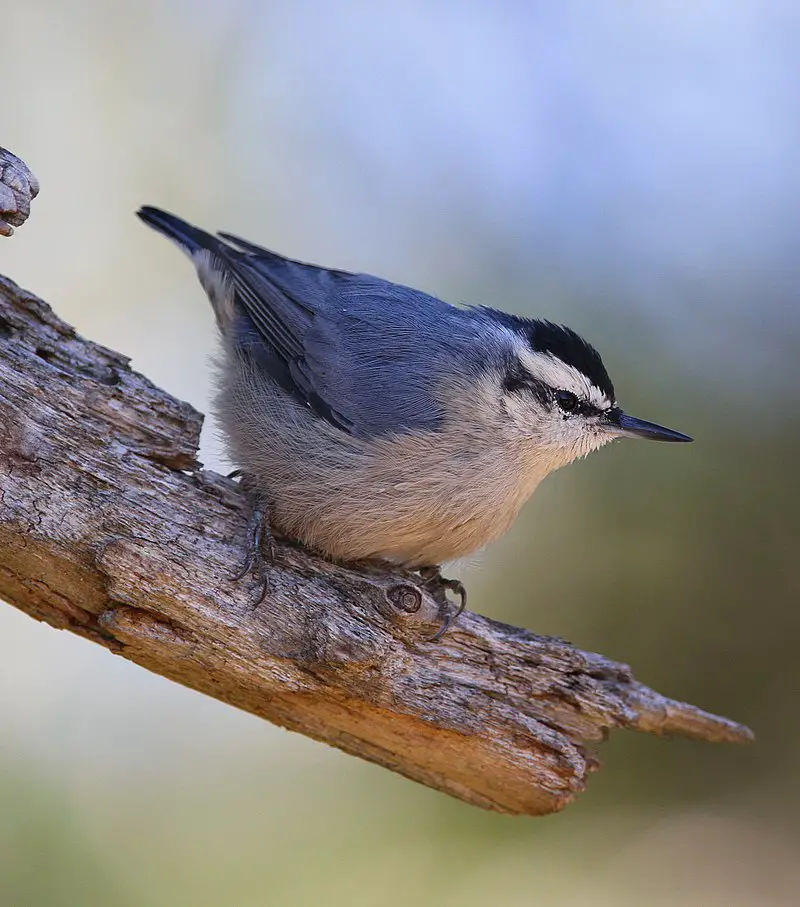
The Corsican Nuthatch is a species of bird belonging to the nuthatch family Sittidae. It has an overall length of 12 cm and bluish gray upperparts with greyish white underparts.
Males can be distinguished by their entirely black crowns, while females have lighter shades on top.
This sedentary bird is territorial but not very shy as it often feeds high in trees located in its native area: Corsica Island.
Its diet consists mostly of insects, which they search for among cracks or crevices found on tree trunks and branches.
The conservation status of this species is currently Least Concern due to its relatively large range size despite being threatened by deforestation activities taking place on the island.Scientific classification:
| Kingdom | Animalia |
| Phylum | Chordata |
| Class | Aves |
| Order | Passeriformes |
| Family | Sittidae |
| Genus | Sitta |
| Species | S. whiteheadi |
Also Featured In: Nuthatches Species, Most Common Birds of Corsica
46. Common Redstart
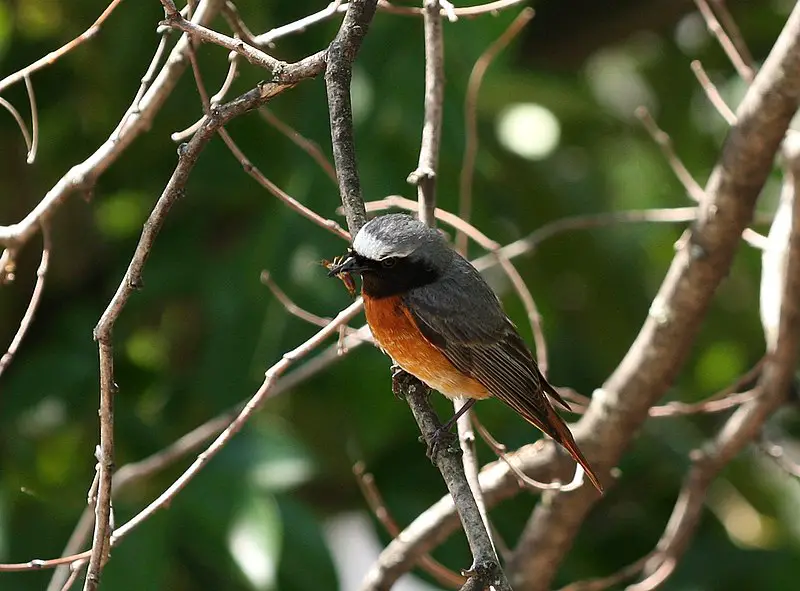
The Common Redstart is a small passerine bird found in the Phoenicurus genus. It was once classified as part of the thrush family but it has since been identified as an Old World flycatcher.
The species was first formally described by Swedish naturalist Carl Linnaeus in 1758 and is known for its predominantly reddish-orange plumage, hence its name red start.
This beautiful little bird inhabits open woodlands across Europe, Asia and northern Africa where they feed on insects such as flies, moths and beetles which they catch while flying or hovering over vegetation with their wings spread out like fans.
They also enjoy consuming fruits when available during autumn months – making them a welcome visitor to any garden.
These birds are not only aesthetically pleasing but also beneficial to local ecosystems due to their diet of insect pests that can be harmful to plants.Scientific classification:
| Kingdom | Animalia |
| Phylum | Chordata |
| Class | Aves |
| Order | Passeriformes |
| Family | Muscicapidae |
| Genus | Phoenicurus |
| Species | P. phoenicurus |
Also Featured In: birds of orange, Belarus Birds You Should Know
47. European Robin
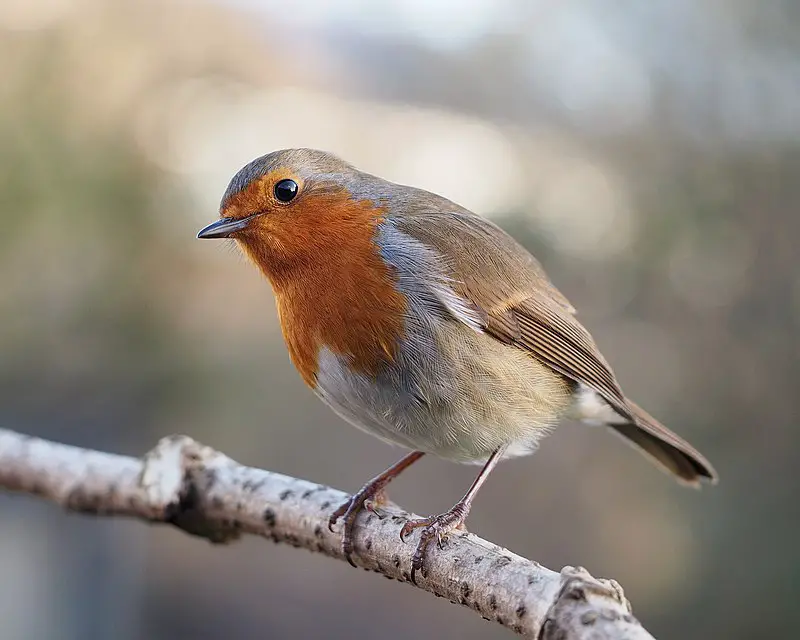
The European robin, also known as simply robin or robin redbreast, is a small insect-eating bird belonging to the chat subfamily.
This bird species can be found across Europe, extending east to Western Siberia while inhabiting North Africa.
The bird species is relatively sedentary and is found in most of its range, except for the far north.
Measuring around 12.5-14.0 cm, this bird is commonly known for its distinctively red breast feathers.
As an insectivorous passerine bird, the European robin mainly feeds on insects to sustain its energy.
Given its widespread range throughout Europe and continuous presence in certain parts of the world, the European robin is widely recognized for its distinct physical appearance, singsong voice, and tiny size.Scientific classification:
| Kingdom | Animalia |
| Phylum | Chordata |
| Class | Aves |
| Order | Passeriformes |
| Family | Muscicapidae |
| Genus | Erithacus |
| Species | E. rubecula |
Also Featured In: Most Common Songs Birds that Live around You, Italian Birds You Should Know
48. Western Jackdaw

The Western Jackdaw is a member of the crow family and is found throughout Europe, western Asia, and North Africa. While most populations are resident, some migrate south in the winter.
There are four subspecies, each with distinct plumage coloration. Despite being a common bird, the Western Jackdaw is a fascinating species known for its high intelligence and adaptability.
These birds have been observed using tools, working collaboratively to solve problems, and even recognizing individual human faces.
With their distinctive and varied calls, they are often heard before they are seen, chattering away in the trees or on rooftops.
Due to their remarkable intelligence and adaptability, the Western Jackdaw is widely regarded as a beloved symbol of wildlife in many cultures.Scientific classification:
| Kingdom | Animalia |
| Phylum | Chordata |
| Class | Aves |
| Order | Passeriformes |
| Family | Corvidae |
| Genus | Coloeus |
| Species | C. monedula |
Also Featured In: Flocks Birds around Us, Ukrainian Birds You Should Know
49. Eurasian Magpie
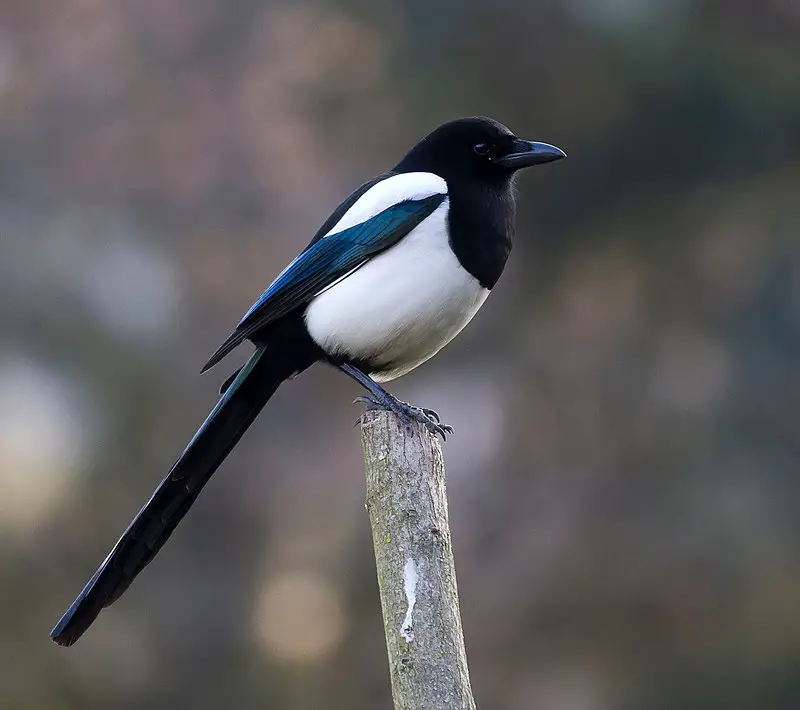
The Eurasian magpie, also known as the common magpie, is a bird found in the northern part of the Eurasian continent. It belongs to the corvids family and is part of the “monochrome” magpies.
The bird is a resident breeder that is always available in Europe. The only other magpie found in Europe is the Iberian magpie.
The magpie is often used as a synonym for the Eurasian magpie by English speakers.
The bird has a distinct black and white appearance and is known for its intelligent behavior. It can imitate sounds heard in its environment and also demonstrates self-awareness.
The Eurasian magpie is omnivorous and feeds on insects, small mammals, and fruits.
It forms monogamous pairs that last for a lifetime and builds nests in trees or bushes. The bird is not endangered and is often regarded as a nuisance due to its habit of raiding gardens for food.Scientific classification:
| Kingdom | Animalia |
| Phylum | Chordata |
| Class | Aves |
| Order | Passeriformes |
| Family | Corvidae |
| Genus | Pica |
| Species | P. pica |
Also Featured In: Common Estonian Birds, Common Birds in the Cities
50. Pallid Harrier
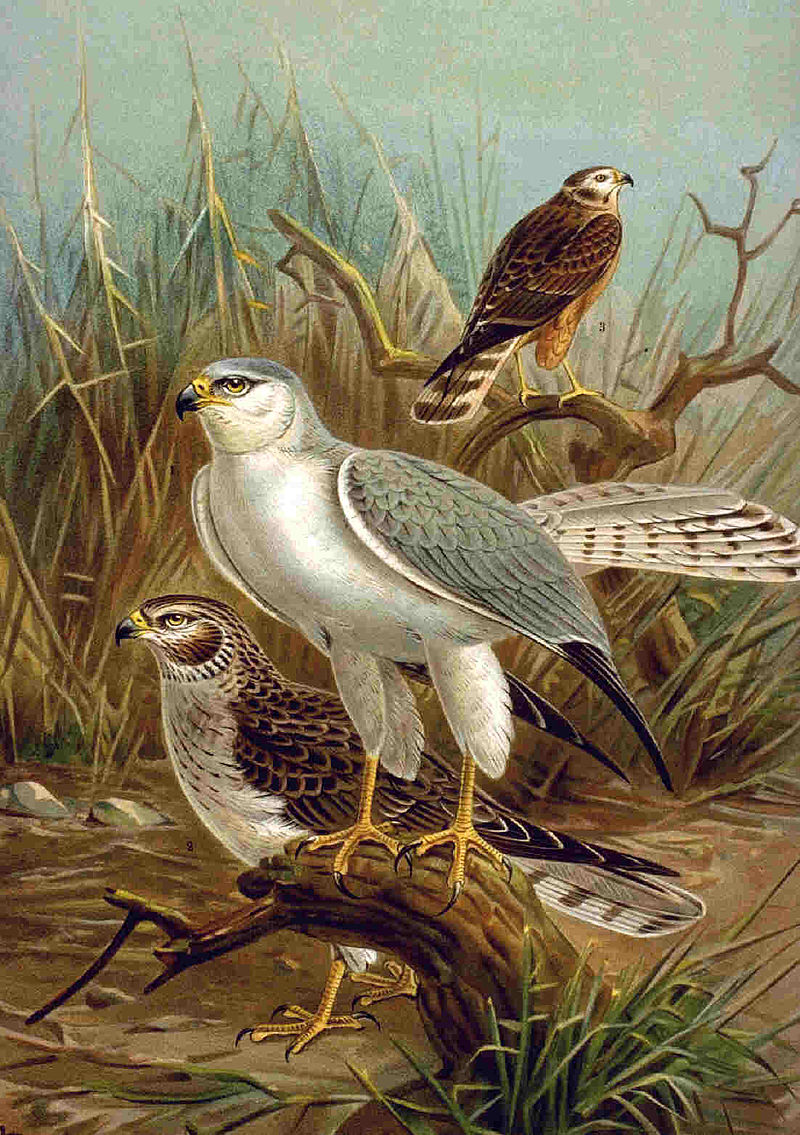
The Pallid harrier, also known as Circus macrourus, is a migratory bird of prey that belongs to the harrier subfamily.
Its name is derived from the Ancient Greek words kirkos and makros- referring to its circling flight and long-tailed structure, respectively.
This species breeds in the southern regions of eastern Europe and is known for its impressive aerial displays during courtship.
The Pallid harrier is also remarkable for its unique foraging behavior, as it typically preys on small mammals, insects, and birds while in flight.
Unfortunately, like many bird species, the Pallid harrier is under threat due to habitat loss and changes in land use practices.
Conservation efforts are underway to protect this stunning bird of prey and preserve its natural habitat for future generations to come.Scientific classification:
| Kingdom | Animalia |
| Phylum | Chordata |
| Class | Aves |
| Order | Accipitriformes |
| Family | Accipitridae |
| Genus | Circus |
| Species | C. macrourus |
Also Featured In: Common Uzbekistan Birds, Armenian Birds You Should Know
51. Dartford Warbler
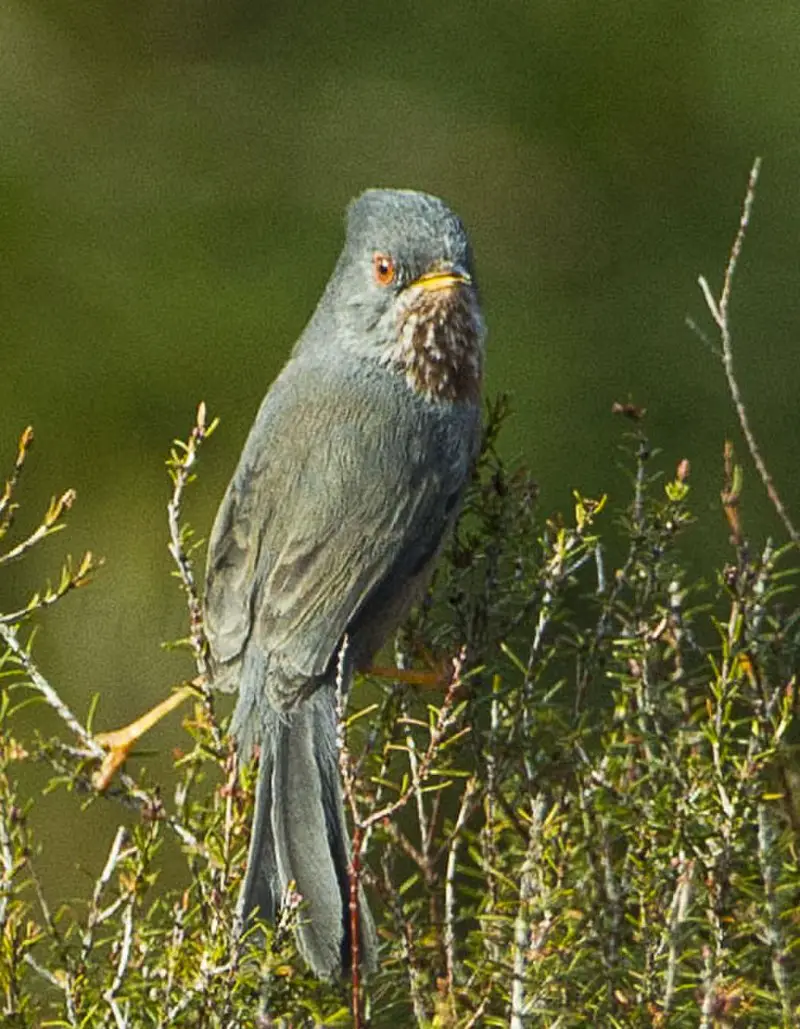
The Dartford warbler is a small bird found in parts of Europe and Africa. The male has grey-brown upperparts and reddish-brown underparts, with a white patch on the belly.
It has light speckles on its throat and a red eye-ring. Their tails are long and thin, while their bills are pointed and thin. The females have a similar appearance.
Dartford warblers prefer warmer climates and are commonly found in heathlands, scrub, and other open areas with low vegetation.
They are known for their loud and distinctive song, which is often heard during their mating season. Despite their small size, they are hardy birds and can survive in harsh environments.
Overall, the Dartford warbler is a fascinating and beautiful bird that is well adapted to its natural habitat.Scientific classification:
| Kingdom | Animalia |
| Phylum | Chordata |
| Class | Aves |
| Order | Passeriformes |
| Family | Sylviidae |
| Genus | Curruca |
| Species | C. undata |
Also Featured In: Most Common Birds of Sardinia,